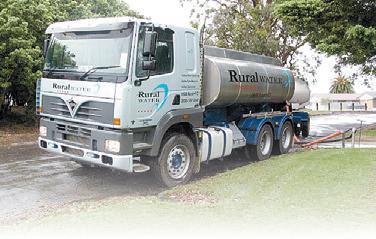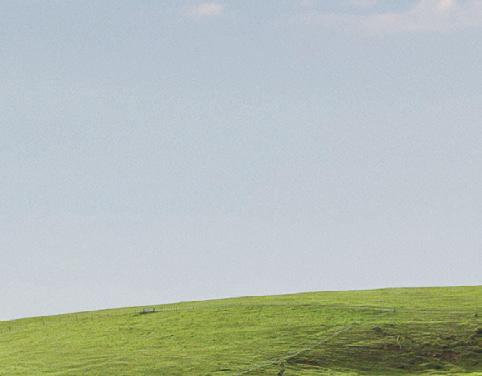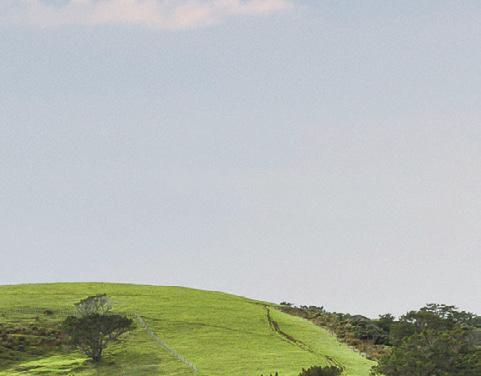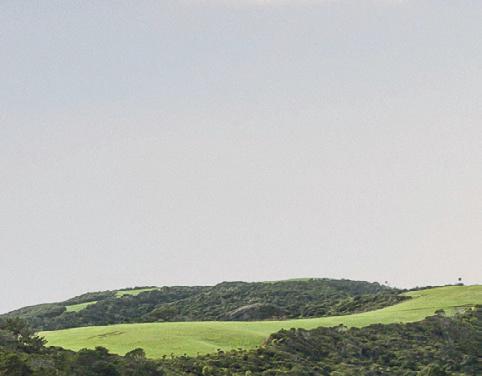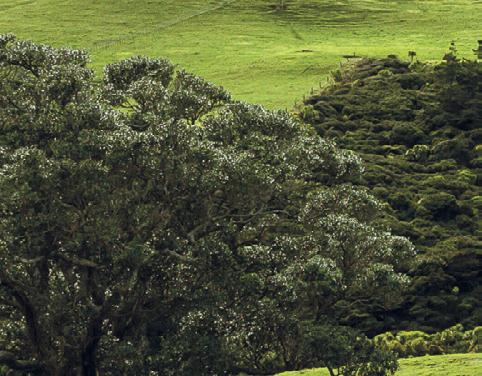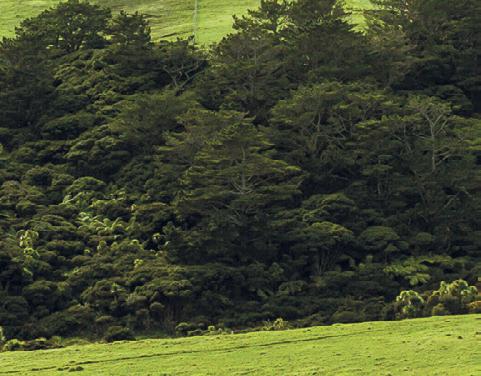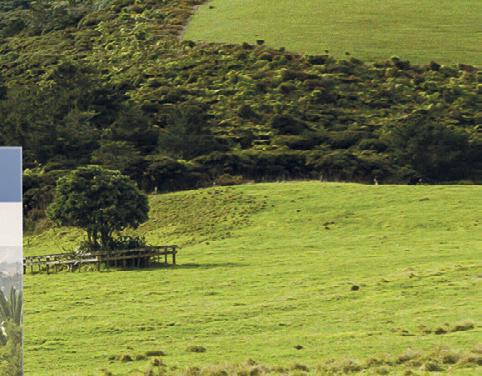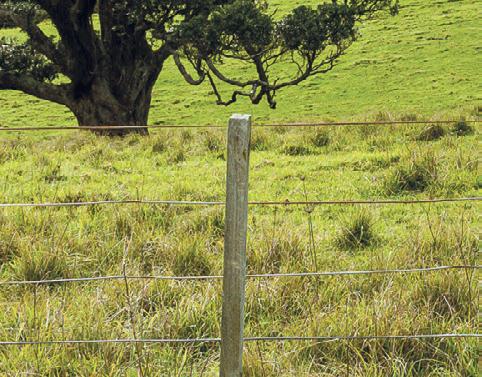




























National Agricultural Fieldays
June 14-17, Mystery Creek Events Centre, Hamilton
Readers will have seen our preview stories in recent issues regarding this year’s Fieldays, but don’t forget that this major rural event is on... now! Opening shortly after we hit ‘print’ on this issue, Fieldays is again o ering much to country people from across the country. See www.fieldays.co.nz for a full schedule, news and more.
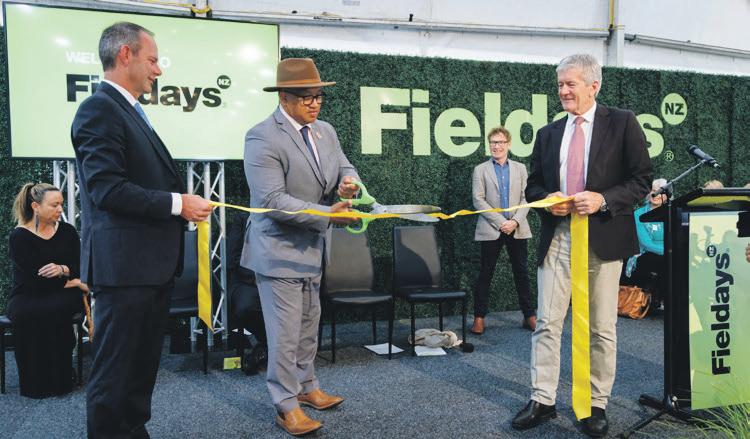

Wonderland Glow Show
June 16, times vary, Hawkins Theatre, 13 Ray Small Dr, Papakura
Audiences are in for a trip down the rabbit hole thanks to this de-light-full show! From an eight-metre caterpillar to dancing flamingos, this glow-in-the-dark puppetry performance is ideal for children aged up to seven years. See www.glowshow.co.nz for more information.

Eye On Nature Wearable Arts Fashion Show
June 22, 6.30-8.30pm, Due Drop Events Centre, 770 Great South Rd, Manukau
Eye catching designs will, once again, ensure creative fashionistas who are also environmentally conscious are cloaked from top to toe in praise. Upcycling is the aim as students display their eco-friendly garb on the catwalk. Visit www.beautification.org.nz for details..
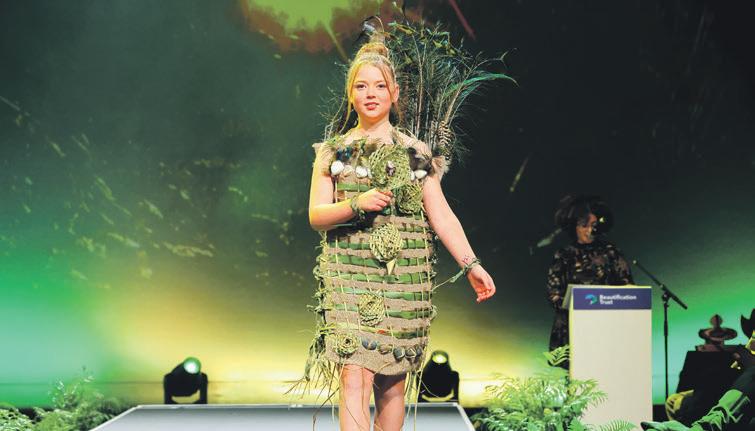
The Auckland South Home Show
June 23-25, from 10am, Due Drop Events Centre, Great South Rd, Manukau
Whether we’re designing, building or renovating, this expo is focused on locals, including tradespeople, designers and suppliers, while being accessible to homeowners across Auckland and from further afield too. For further information see www.aucklandsouthhomeshow.co.nz.

Rangatahi Resonate & Ko Ahau te Whenua
June 27 – August 12, Franklin Arts Centre, Pukekohe Through two exhibitions, Franklin Art Centre becomes a hub for local Maori culture. While Rangatahi Resonate (June 27 – July 19) champions self expression through various mediums, the Ko Ahau te Whenua installation (July 1 –August 12) sees Jean Yern showcase the rich wairua (spirit) of our area. Details via the Franklin Arts Centre Facebook page.


Aro
June 30, from 8pm, OSPA Theatre, 14 Hall Rd, Onewhero Pukekohe-based Aro performs close to home before heading out on tour. The duo will present their unique blend of folk, soul, haka, with a touch of jazz, in Maori and English. Emily Looker (right) will also perform at the next Franklin Music Night (July 8). See pages 26-27 to read more about Aro and visit ww.aromusic.co.nz for a tour schedule.

Quota Papakura Antique Fair
July 1-2, 9.30am-4pm, Drury School, Young Cres, Drury From heirlooms and collectables to valuable antiques, the Quota Papakura Antique Fair ensures fair deals all round. With furniture, China, crystal, linen, glass, silver, jewellery and much more for sale, this event is ideal for treasure hunters. In addition, proceeds will help community organisations. See www.facebook.com/QuotaPapakuraInc for more.

July 2, from 6pm, Harrington Theatre, 2 Harrington Ave, Pukekohe
Jackie’s back and this time she means business! Singer and comedian, Jackie Clarke, presents a show featuring iconic songs delivered in her own, soulful and inimitable style complete with an engaging sense of humour. For more information visit www.pukekoheperformingarts.org.nz.

PLEASE NOTE: information regarding times & dates of these events was correct at the time this issue went to print. However, readers are advised to check events online for updates.
I’m shivering. If only there was some way to stay warm. Perhaps politicians will send a 16 page pamphlet to advise me – I bet it’d burn nicely. The Warmer Kiwi Homes programme is important, but advertising it comes at a cost.
Among the top tips to help us ‘Find Money in Weird Places’ are: switching o appliances we’re not using and taking shorter showers. A long way to say ‘waste not, want not’, appears to be the order of the day… yet again.
Government has turned up the heat on advertising in recent years, which could help local media struggling with rising print costs while attempting to inform their communities, if that’s where the dollars went. However, big TV campaigns tend to lead the way.
Employed e ciently, advertising and associated promotions can be

highly e ective, but how e cient is it to bombard televisions to tell us we should’ve already completed the census months ago, for example? Probably not quite so much as giving away free Warriors tickets to people breaking the law (yup, it’s the law) by not filling it out sooner. Similarly, free fast-food vouchers encouraged holdouts to get vaccinated against Covid, but seeing as a healthy diet is among the best defences against illness, perhaps gym vouchers may have been a better carrot to dangle.
A key component seems to be missing in these cases and more: is the expense liable to be justified by the outcome? Do the ends really justify the means? The vast majority reached by the warmer homes’ advertising will either already know that it’s better to spend money on a heater than a

Freephone:
Editor: Jon Rawlinson DDI 09 271 8036 editor@ruralliving.co.nz

POLITICAL SABBATICAL:
Politics is a rough sport. And yet, Ross Robertson, certainly had the ‘chops’ to cut it with the best. Although he has set down roots in rural Ramarama, the former MP and local councillor (pictured on this month’s cover) still keeps his hand in the wider game of public service. Recently, Helen Perry caught up with this energised local to talk politics, rural life and much more. See pages 10-11.

Sales: Kelly Cooke DDI 09 271 8026 kellyc@ruralliving.co.nz
Art Director: Clare McGillivray DDI 09 271 8067 clare@ruralliving.co.nz




Design: Claire Robertson clairer@times.co.nz
Publisher: Brian Neben 151 King Street, Pukekohe, Auckland PO Box 38 232 Howick, Auckland


shower or just couldn’t care less. Either way, mission not accomplished.
Conversely, in our latest ‘booklet’, we’ve included information we think most won’t already know. As a ‘warm up’, we interviewed former Labour minister turned local lifestyler, Ross Robertson, and a former macadamia farmer, Virginia Warren, looking to bring an innovative programme to Pukekohe. We also learnt more about local musicians, collectively known as Aro, and we shower readers with other content including winter-warming recipes, competitions and more.
Unfortunately, our publication won’t warm anyone up, nor help save ‘up to’ $500 per year on energy bills. It won’t cost $2.8 million either. How ‘Find Money in Weird Places’ can cost so much reminds me of a scene from an old TV show:
Blackadder: How did you manage to find a turnip that cost 400,000 pounds

Baldrick: Well, I had to haggle
Jon Rawlinson, editor

Rural Living is a FREE monthly lifestyle magazine delivered to RD 1,2,3 and 4 rural lifestyle properties in the greater Franklin district and beyond – Pokeno to Drury/Karaka and Clevedon to Waiuku. It is also available from businesses throughout the district's regional townships, including their key community of Pukekohe.














Oh baby, do we have a prize for you! Ahead of The Baby Show (details at www.babyshow.co.nz) we have THREE prize packs up for grabs. Valued at (approx) $500 each, packs include products for little ones, or to help big ones take care of little ones, as well as show tickets.




Liv Sisson shares how to identify the best edible varieties of fungi and how to cook them as well as presenting stunning photos, fun facts and detailed descriptions of more than 130 species. We have a copy of this book to give away.
Liv Sisson: Fungi of Aotearoa | RRP $45 | Penguin











Why just crack open a tin of soup when we can really make a meal of it? Hot on the heels of new soup releases (see our May-June issue), F Whitlock & Sons has served up quite the treat for one lucky reader. Featuring soups, beans and sauces, this hamper is definitely a hot ticket in more ways than one!



Rising to the occasion, the new Rose & Shine range from DB Cosmetics will help ensure we look our brightest even through the gloom of winter. While all of these products are available from pharmacies nationwide (including Bargain Chemist, Pukekohe), we have a makeup pack (valued at almost $150) to give away.







More than a book, it would take volumes to cover the life of Pukekohe’s Virginia Warren! She has long served our local community. Recently, we caught up with this former nurse, macadamia grower (and so much more!) to focus on her service through BPW (Business and Professional Women) Franklin as well as her latest project, an innovative programme for seniors.

What is Abbeyfield about and how does it work?








Abbeyfield provides a ordable, shared housing for independent people aged over 65 where they can enjoy the company of others in a family-style environment. It can fill a gap between living alone or going into a retirement village or rest home. Many older people live in houses that are too old or large to easily maintain, or di cult or expensive to heat. Abbeyfield allows people to retain their independence without the burden of maintaining a home.
There are 14 Abbeyfield houses in New Zealand, each catering for 11-14 people. Residents have their own room with ensuite and share communal areas. A housekeeper provides meals and residents dine together. Once established, Abbeyfield houses are



self-funding, with rents covering operating costs. Each house is managed by a local committee of volunteers and their contribution ensures rents remain a ordable and residents are well supported.
Why is this concept needed now more than ever?
With the number of people over 65 set to double in the next 15 years, it is crucial there are such housing options available. People are living longer lives, requiring them to have more funds on hand, and many don’t earn enough to buy a house, or they have to sell due to life shocks, such as a relationship breakup or illness. Others sell and rent in order to free up funds for retirement. However, many rentals are not suitable for older people, being cold and damp or not fit for those with mobility issues. Abbeyfield houses are purpose-built for seniors.
Why does Franklin need an Abbeyfield house and what needs to be done?
An Abbeyfield house would be a good fit for Franklin because there is a growing population here. It would mean people don’t have to move out of the area in their later years and they are far less lonely. We are looking for anyone who can gift land as well as local people with enthusiasm to join a group to get it o the ground. We need to set up a local steering committee to source land and funding to build the house. Community involvement is crucial. We also need to organise how the house will be run, employ a cook/housekeeper and develop the gardens more. It is likely to be a long-term project.
When was Business and Professional Women founded? What does it do?
Founded in 1930, BPW advocates
for women. It is apolitical, inclusive and diverse. It is an influential, international network of business and professional women from more than 100 countries with links to the United Nations. BPW develops the professional, leadership and business potential of women on all levels through mentoring, networking, skill building and economic empowerment.
BPW NZ was formed in 1939 and we now have 10 clubs nationwide. The clubs are run by volunteers at a local level. We lobby for community and national issues while networking with other women’s groups worldwide. BPW Franklin was established in 1983.
Is there any particular BPW accomplishment of which are you most proud?
There have been many but, around 2013, a member told us there were forced marriages taking place right here in our district! We presented a resolution to government to stop this practice. In 2014, BPW NZ took it to the International Congress. There, the NZ delegation sat next to Nigeria and found they were determined to stop young girls becoming child brides. The delegates united and we are thrilled to say it is now part of UN policies.
Has the need for the organisation lessened or grown over time?
Until women have real equality in opportunities and pay rates, and there is no discrimination, BPW has a major role to play.
You’re a founding member, life member and past president of BPW Franklin. What role do you undertake now?
I have been extremely fortunate to be voted into these positions.
My main focus with the organisation now is enthusing others with the passion to find out more about BPW Franklin Inc and the important work we do.
If you could grow any plant or raise any animal (real or imagined), what and why?
We used to grow macadamias, and still have our property in Pukekohe East, but the trees are reduced in number as they are now quite big and mature. I no longer process the nuts and have sold most of the machinery to other locals. I think my growing days are done.
If you could be Prime Minister for one day, what would you do first and why?
I’m still kept much too busy for that job! This one’s probably best left to people with more time on their hands.
If you could invite any three people (living or dead) to dinner, who and why?
Florence Nightingale has always been a leading light for me, and Queen Elizabeth I because she was a great leader. I’d also invite my paternal grandmother – she had a wonderful sense of humour and she was with the British Consul in Naples. She was a great role model for me.
Further details about BPW are accessible via www.bpwfranklin.org. nz. For more information about Abbeyfield, see www.abbeyfield.co.nz, and to help Virginia pave the way for a house in Franklin, email vvwarren@ps.gen.nz.

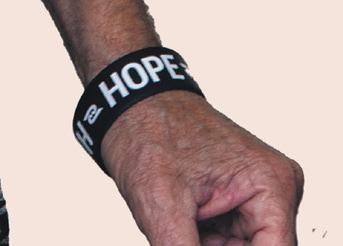
Ross Robertson’s fiveacre Ramarama property is far from the corridors of The Beehive in Wellington yet, despite being ‘on sabbatical’, the former Manukau East Labour MP remains committed to public service, as HELEN PERRY discovered.


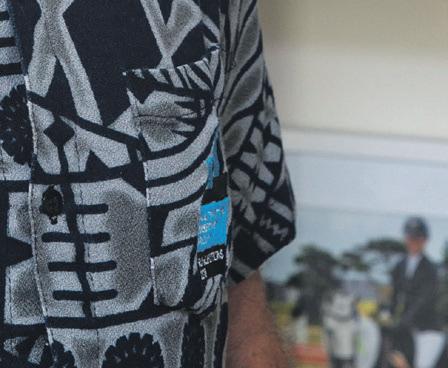


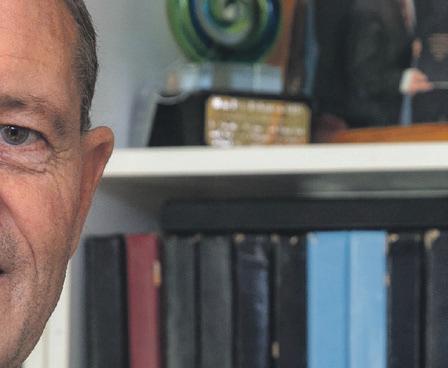
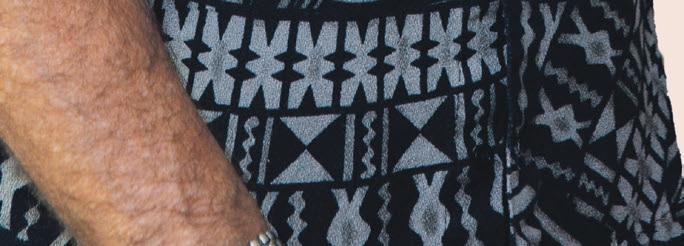

public service, as HELEN
Arriving at Gracefields, the home of Ross (QSO) and Grace Robertson, I’m keen to reunite with a couple I haven’t seen in more than a decade – Ross around the political traps and Grace much earlier at Papatoetoe Pony Club where she befriended my daughter.
I am armed with a list of questions, but planning soon goes awry with a good, old-fashioned catchup underway. It takes some e ort to return to the task at hand – quizzing Ross about preservation of local growing land, the state of the government and what he’s up to these days. He starts with thoughts about housing seemingly taking over prime horticultural land locally, particularly in and around Pukekohe.
horticultural land locally, particularly in and














































and David Parker (Environment when making decisions on land use.’
available for primary production,


Ross is aware that, in 2018, Damien O’Connor (as Minister of Agriculture) and David Parker (Environment Minister) visited Pukekohe to announce government intentions to set up a national policy statement aimed at introducing a: ‘clear and consistent policy councils would have to follow when making decisions on land use.’ Councils were to ensure there would be enough highly productive land available for primary production, now and in the future, and to
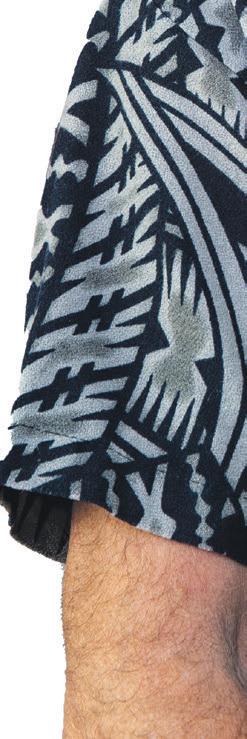
protect it from inappropriate use and development.
“Of course, we must protect this ‘breadbasket of New Zealand’,” Ross says. “However, strong advocacy from locals and all New Zealanders is needed if government action is to be revived after the disasters of these past few years.
“What people say matters, so writing to the appropriate minister, local MPs and local boards is the way to evoke a response. You can’t stop advocating; you have to keep it up until government reacts. Stand up for your beliefs and make your views known if you want to be e ective.”
The conversation switches to the upcoming general election and who will be leading the country next year. Ross clearly sees our new Prime Minister, Chris Hipkins, as a strong replacement for Jacinda Ardern.
“Chris has his feet on the ground. He came out of the Hutt [Lower Hutt], played soccer for Stop Out sports club and knows how to get his hands dirty. He is well qualified and a product of Helen Clark. He has the ability to put Labour back in the game, but we should recognise that, when a government has been in power for eight to nine years, voters generally look for change. It may not necessarily be better, just di erent.”
If Labour was to miss out on becoming the next government, Ross believes the Mr Hipkins is young enough to survive an election loss while keeping his feet on the ground:
“He has walked in the worlds of both ‘struggle street’ and
academia – that takes strength,” Ross says.
At this point I ask him about his motives for entering the political arena years ago.
“Productivity!” he exclaims. “That was the catalyst. Surprisingly, as a young child I saw myself becoming a politician, but it was as an industrial engineer that I realised New Zealand needed to raise overall productivity if the it was to emerge from being a low wage country, see more jobs created and prosper,” he recalls. “Today, we are still a low wage country although, in terms of productivity, Australia is actually worse; they get away with it through sheer population size.”
Improving productivity is still critical, but Ross is more worried about the rapid progress of Artificial Intelligence (AI) and its future impact.
“I really am concerned as to where this new AI era will lead,” he confirms.
Although always keen to debate New Zealand’s future, debates of a di erent nature now take up this former assistant speaker’s time. He is presently acting secretary general of the Model United Nations Assembly (MUNA Auckland), which simulates the working of the United Nations by having Year 12 and 13 students represent UN countries in debates about world politics and social concerns.
“It helps develop student awareness of the UN and the international situation. This interest is complemented by my role as president emeritus of Parliamentarians for Global Action which I’ve been involved
with since I was in o ce.”
Through his close connection to family and church, Ross became a hospital chaplain and now visits Middlemore Hospital every Tuesday.
“It’s about listening, caring and giving hope to the most vulnerable. When people open up about their worries, I see some amazing outcomes.”
But there’s more – the list is long! To mention a few, after leaving parliament, Ross served on the Otara/Papatoetoe Local Board for nine years and, today, he is president of the Franklin & Districts JP’s Association.
As a young man, he represented Auckland and Wellington in rugby at various levels and coached women’s soccer and softball at provincial level, so it’s no surprise that he’s patron of four football clubs, one rugby league club and a tennis club among others.
“At the last AGM I was delighted to be made the first honorary member of Northern Region Football after holding the position of president,” he says.
With parliamentary life behind him, this rural/urban lifestyler has no regrets about career outcomes, except for one:
“My biggest disappointment in o ce was that, across 15 years, my Private Member’s Bill for a Code of Ethical Conduct for Parliamentarians was never drawn from the ballot. MPs often behave very badly in the House. That left me crestfallen,” he adds. “However, in 2015, I was privileged to receive the Queen’s Service Order for faithful service to the Crown – I felt extremely honoured.”
More on page 12.


Knowing that pinning down her busy politician husband for appointments was almost impossible, Grace Robertson took up the house-hunting reins, attended an auction and bought a property before Ross had a chance to say, ‘point of order’!
“When Grace rang me in New York and said she was o to buy a farm, I just had time to suggest a ceiling on the price before it was a done deal,” Ross recalls with a laugh. “That’s how we came into possession of five beautiful acres in Ramarama. Fortunately, despite being raised in urban Wellington, I spent many hours on my grandfather’s farm and that of two uncles. By the age of 10, I could milk a herd of cows on my own, so I was fit for rural life.” Furthermore, Grace had always been completely at home in the country. Born and raised near the Yorkshire Dales in England, this able horsewoman says she started riding aged eight and has continued to do so since.
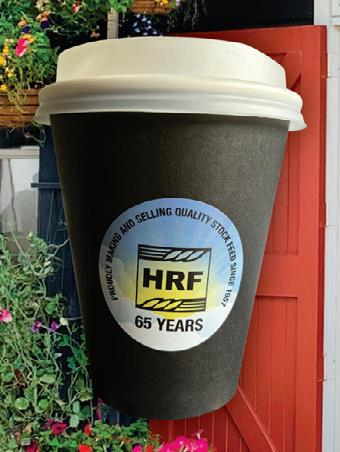

“When young, I participated in pony club and competitions, but it wasn’t until our daughter, Lisa, started riding here in New Zealand that I became involved with Papatoetoe Pony Club. I don’t ride as much anymore; these days I break more easily!”


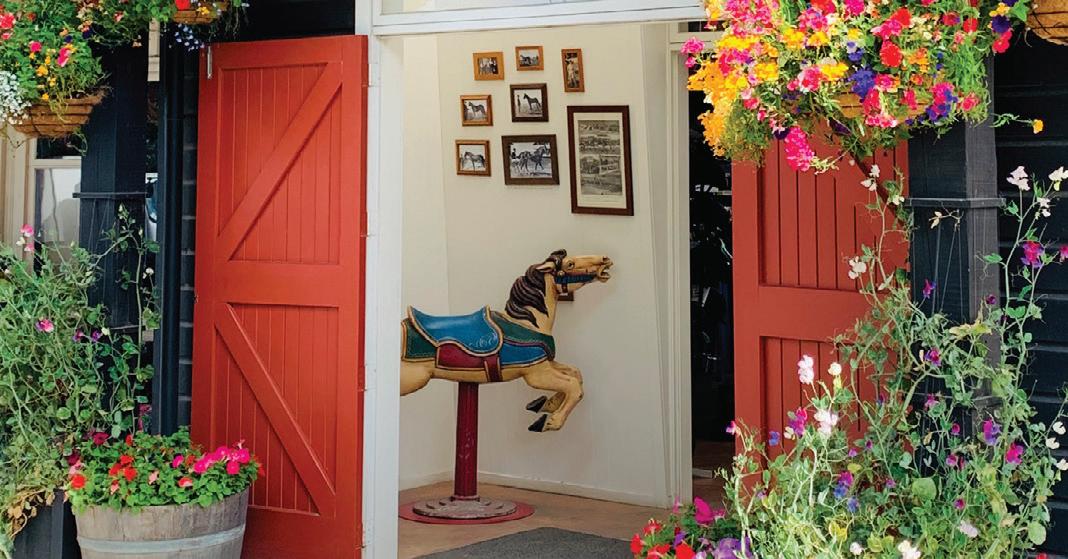
she smiles.
“However, visitors will spot two horses in the paddock, both Kaimanawa mares purchased after a muster four years ago. I was registrar with the Kaimanawa Trust for 10 years and I’ve had a number of Kaimanawas. Broken in, they are wonderful horses, great jumpers and extremely suited to young and older riders.” Horses aside, Grace supervises much of the farm work. As with many a politician’s wife whose husband’s work frequently takes
them away, she has learned to manage.
“With Ross still involved in a wide range of community activities, I’m happy working around our ‘plot’. Though small, it still needs care, so we have 20 sheep to keep the grass down,” Grace adds. “But, of course, they need tending too – shearing, hoof trimming, drenching and more. Then there’s the horses plus paddocks and gardens. Fortunately, it’s work that I love; I’m still very much an outdoor girl!”





Ensuring animals are safely sedated is essential to their health and wellbeing, as Dr Jennifer Stone BVSc (Dist) BSc explains.
To carry out certain procedures we need to sedate/anaesthetize farm animals – this is o en necessary for our safety and yours as well as the animal’s.

Sedation is necessary for certain, routine (but painful) procedures, especially when such facilities as a race and head bail are not available. If this is the case, we must administer the drug via intramuscular injection, which has more variable results than intravenous administration.
Just as there is with people, there is risk associated with every sedation of an animal. Doses must be estimated based on weight and the animal’s degree of anxiety. Some animals can have a much di erent response to the same dose of sedative as others, so reactions can be unpredictable.
Most adverse reactions are due to cardiorespiratory depression, occurring in the heart and lungs. Bloating of ruminants and overheating on hot days can also be significant issues. Some of these problems can be managed by propping animals into an upright position, keeping them cool in the shade and supervising them during recovery. Unfortunately, animals can have varied reactions, occasionally leading to death.
Reversal drugs o en speed recovery, but






their e ectiveness may vary. Once these are administered, animals can either remain lying down or stand before returning to a prone position sometime later.
Before proceeding with eld sedation/ anaesthesia, it is important that animal owners are aware of the risks and alternative methods for performing procedures are considered. For example, moving the animal to another property with adequate restraint facilities, using more pairs of hands, or using other physical restraints (where appropriate) may be better options.
Most importantly, contact your vet –trained professionals are always the best people to administer sedation.
As the warm, wet autumn weather continues, ensure a parasite control strategy is in place for your property. This may involve the use of drenches, particularly for young stock that has not yet developed solid immunity against internal parasites
For horses, ensure tetanus vaccinations are up to date. Also, check skin daily, including under rugs, for mud fever and monitor for lameness as seedy toe and hoof abscesses are common at this time of year

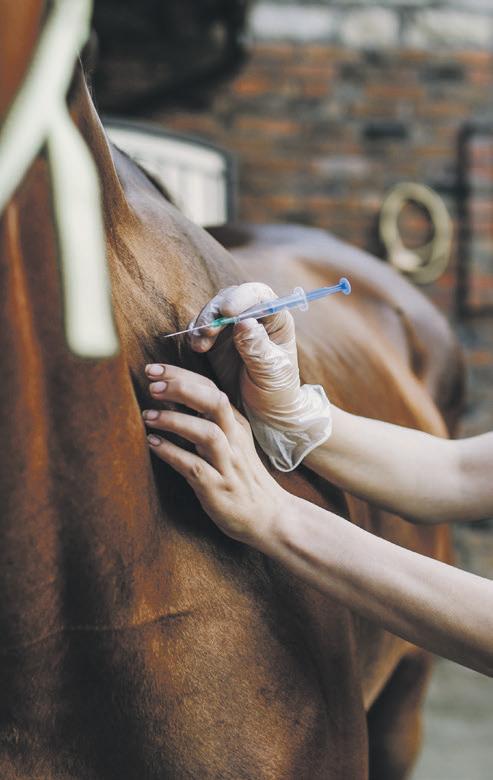
Treat chooks to protect against internal parasites and red mites. Products such as Aviverm and Exzolt can be added to their drinking water
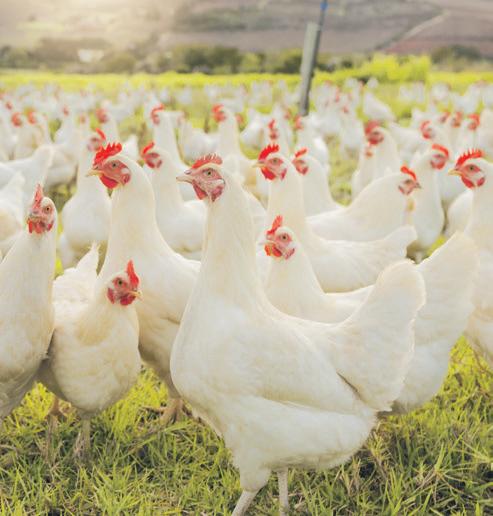

Billed as another ‘Wellbeing Budget’, this year’s ‘no frills’ spending plans were focused more so on balancing the books than splashing the cash. Reactions from primary sector organisations were rather muted at best, however Federated Farmers asked for ‘absolutely nothing’ in this year’s Budget and the organisation’s wishes seem to have been met.
“We made it clear that farmers aren’t looking for a handout and are happy to stand on our own two feet,” the organisation’s Wayne Langford says. “But the other side of that coin was a request that government stop weighing us down with impractical, unpragmatic, and unfair regulations that are heaping on costs and tying us up in red tape. We’re still waiting for them to deliver on that second request.”
Federated Farmers has been railing against government regulations impacting farmers and growers in recent years. Increasing costs make matters worse, Mr Langford adds.
“We have a ‘cost-of-farming crisis’.


Costs are heading up, but the price we are receiving for our produce is heading in the opposite direction. Farmers are getting squeezed in the middle and are struggling to turn a profit. Farmers are having to tighten our belts, count every penny and live within our means and it’s disappointing to see government isn’t doing the same.”
Rural advocacy group, Groundswell, was unsurprisingly unsurprised by the budget, stating that it all but ignores farmers.
“It’s absolutely no surprise that it o ers nothing for farmers or rural communities,” a statement from the group asserts. “Investing in the communities that produce New Zealand’s food is as important as car charging hubs. Focusing on ‘bread and butter issues’? Yeah, right!

Groundswell believes agriculture and rural development should be a top priority for government.
“This budget confirms Labour has no idea how farmers contribute and the struggles we are facing.”
While some primary industry groups contend there is little in this year’s budget for ‘the backbone of the economy’, the backbone’s back is set to receive some scratching. Minister for Rural Communities, Kieran McAnulty, says country people are set to benefit.



“Rural schools face di erent challenges [compared to] city schools, such as the cost of building contractors as the requirement to travel significant distances [can] invoke significant expense. The school is often the heart of the community and I’m glad we are able to help create the best physical environment possible for their children through Budget 2023.”
While funding for rural schools is focused on property improvements, ensuring country roads really can take us home (and elsewhere) is also on the government agenda.
“Rural communities are at risk from being severely impacted by extreme weather events. Additional funding for emergency works will ensure Waka Kotahi (NZ Transport Agency) can continue to respond rapidly to extreme weather and repair roads for rural communities as quickly as possible,” Mr McAnulty adds.
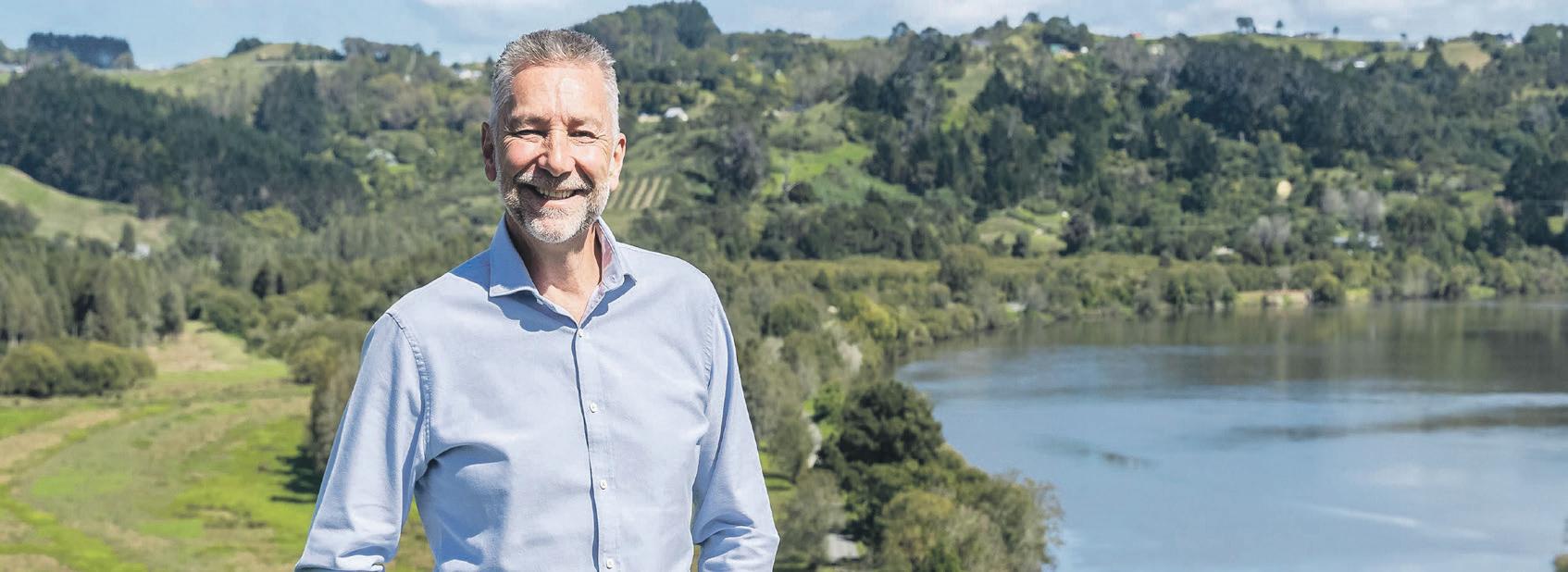
In addition, up to 1000 electric vehicle chargers – for major arterial routes and (primarily) smaller, rural areas – will be fuelled by budget funding.

OFF

PGW Pioneer Ground Works have many years of practical experience in delivering bitumen solutions for carparks, farms, airstrips, truck yards, subdivisions, roads and driveways.


We specialise in bituminous surfacing such as prime coating and emulsion spray seals/




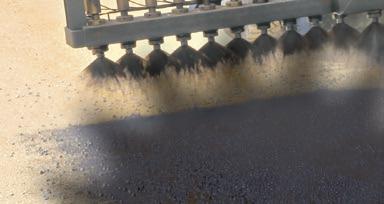









chip seal. Our team can also repair existing or damaged bitumen surfaces.
We can perform a 2-coat seal application of bitumen for durable surfaces that can handle wear and tear.
PGW also offers aggregate, cartage, spreading and bitumen spray truck operating services.
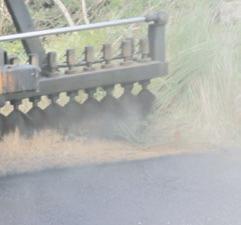


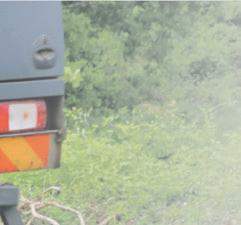


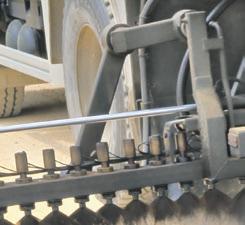
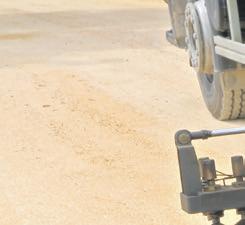

WHATEVER YOUR BITUMEN NEEDS SIMPLY GIVE US A CALL, PGW HAS YOU COVERED
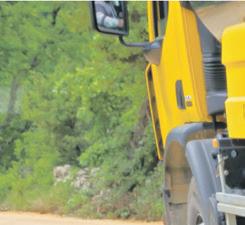
It’s a quick jaunt from Pukekawa to Taupiri but, as JON RAWLINSON explains, it’s the latest stage in a long run for a young (but senior) sportsman.


It was a commanding performance from a young master (in more ways than one) as rural Taupiri hummed along to the music of motocross engines recently – in particular, a couple of Kawasakis set the tune… and the pace.


“I was stoked! I wasn’t sure how I’d feel on the bike, but I thought, in the back of my head, that I could win,” Pukekawa’s Tyler Brown says. “I’d only ever rode it [the KX450F] once, the weekend before the nationals,



Noorth to South, we have diffferent skills, and collecctively we know this country better than anyone The price of a paddock or
Backed by a building queue of buyers, we’re turning up the temperature this season, with Kiwis encouraged by growing optimism, easing inflationary pressures, and a return to positive migration. At the same time a slowing building sector means increased competition for quality properties is drumming up demand and creating an urgency to act. Bayleys offers a genuine strategy for the best sale outcome. Call us to find out more.
worth of a villa, we know the buyers of New Zealand, and everywhere you find us, you'll find our experts and high achievvers. So contact your local Bayleeys officce for an altogether better experience.




the
and it was the first time I’d raced it, but everything just clicked for me. It was tricky, switching between them [the bikes], especially seeing as the 450 has so much more grunt that I had to ride it in a higher gear, but the more I swapped the more I became used to it.”
Son of Craig Brown, lifestyler and owner of Pukekohe’s Mr Motorcycles, this former junior national champion has become a master of his sport, now competing in senior grade motocross. The former Onewhero Area School student secured both the MX1 (open class) and MX2 (250cc) class titles at the New Zealand Motocross TT Nationals. He finished ahead of more established senior riders as well as another new senior, thirdplaced Adam Hodge.
“Adam lives just down the road from me and we’re best mates,” Tyler says. “He’s a bit of a smaller fulla and usually rides a smaller bike than me, so this was really the first time we’ve raced against together.”
Other Franklin locals making their mark were Tuakau’s Cody Sheppard, who won the 14-16 years’ 250 class junior title, and Tyler’s father, Craig, who claimed a new addition to his impressive trophy cabinet.
“Dad won the 45+ veterans’ title. He crashed into a drain and was absolutely covered in mud at
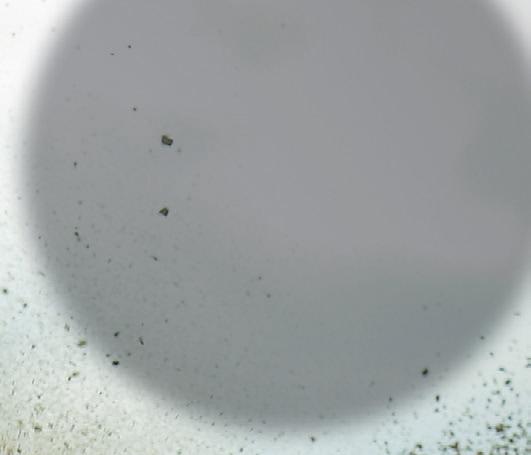




one point, but he was fine and got straight back into it.”



Following in his father’s tyre tracks, Tyler finished a respectable 12th overall at this year’s Motocross Championship series, which concluded in late March.
“I had a few top 10 [finishes] – I was pretty happy with that – and it was my first year doing the full rounds of senior nationals so I’m still building up,” he says. “The nationals were cancelled last year because of Covid, which is mostly why I did cross country. I will go back to it now and again, but motocross is now my main focus. The next big event will be MX Fest at Labour Weekend, the first big race of the season, so I’m looking forward to that for sure.”
Whether he’s heading down the track, or across the country, when not going full throttle on two wheels, Tyler is similarly prepared to roll up his sleeves and get stuck into his work.
“I’ve finished school now and I’m doing a trial with [Pukekohe based] John Wolfsbauer Plumbing,” he adds. “But I still work for dad [at Mr Motorcycles] occasionally, when he needs a hand.”




See our June-July 2022 e-edition (accessible online via www.ruralliving.co.nz) to read more about Tyler’s rise through the ranks of motorsport.


For more regarding twowheeled action visit www.bikesportnz.com. From schedules and news to photos, this site is right up with the pace.

come, including:







LeaderBrand has led the way again with the company’s Taylor Leabourn




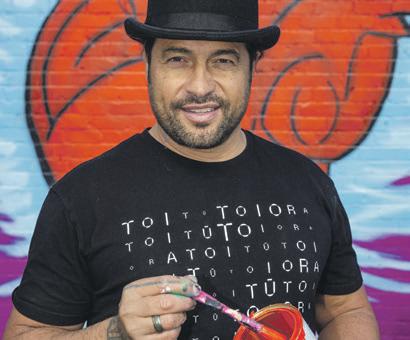




Milksheds from Northland to North Otago were proving grounds for one of the latest rounds of primary industry accolades. Jack Symes (Canterbury/ North Otago) was named the Dairy Industry’s national Dairy Manager of the Year, Mangatawhiri’s Finja Philips






identification, finance and marketing. In the marketing section, Taylor designed a seasonal advent calendar for growing vegetables intended for teachers and pupils.
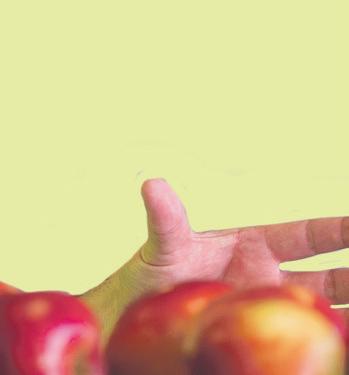
securing the Pukekohe Young Grower of the Year title. marketing in particular. My product
“It came as quite a nice surprise,” the 28-year-old agronomist says of the result. “We had a really good number of contestants this year, it was a really diverse group with a mixture of outdoor vegetables, glasshouse, and fruit experience. We had a lot of fun!”
The annual contest covered numerous aspects of vegetable and fruit-growing – from tractor driving and irrigation to disease
“I put a lot of work into the marketing in particular. My product was just to streamline [existing programmes],” he adds. “If they had the garden, I could supply virtually everything: the seed, fertiliser, how to grow, when to harvest it and basically all they needed to know about growing.”



















finished third behind the category’s runner-up, José Hamber (Manawatu). Hayden and Bridget Goble (Taranaki) claimed Share Farmer of the Year with Bill Hamilton (Northland) securing the Dairy Trainee category. Cameron Henderson (Canterbury/North Otago) received the Responsible Dairying Award. Details at www.dairynz.co.nz.
Rural Living received some acknowledgement of its own recently, claiming Best Front Page, Magazine (runner up) at the Community Newspaper Association (CNA) Awards. This was due, in no small part, to Wayne Martin’s first-class photos, which ensure our first impressions count. Further awards went to Clare McGillivray (Best Graphic Designer – Advertising), Jon Rawlinson (Best Sports Journalist) and to our sister publication, EastLife, for Best Idea/Innovation. Such accolades are indicative of team e orts across the wider Times Media family as we endeavour to inform and entertain our communities.
October’s national Young Grower




Taylor has his sights set on a win in front of a home crowd at October’s national Young Grower of the Year final in Pukekohe. For details see www.younggrower.co.nz.

Transforming an iconic material of rural life into a work of art, Hawke’s Bay’s Ricks Terstappen’s secured this year’s Fieldays No.8 Wire National Art Award with his sculpture titled Connectivity. Works by all of the finalists (including a thought-provoking piece by Pukekohe’s Jevon Howe) are on display at Hamilton’s ArtsPost gallery. Votes for the People’s Choice can be cast at waikatomuseum.co.nz, ‘Howe(ver)’ we may choose to vote...

Locals and others in the primary industries have been on a roll (and on the honour roll) recently, or looking ahead at contests/rewards to

A genuine thoroughbred, top jockey Opie Bosson has been named an O cer of the New Zealand Order of Merit (ONZM) for service to ‘the sport of kings.’





“It is a privilege,” the north Waikato local says. “It hasn’t been easy and taken a lot of hard work, but it is very special, something I am incredibly proud of. Horses are my passion and my job – I love what I do!”
Opie has clocked up more than 1,800 wins (and counting), including six Karaka Millions, during almost


30 years in the saddle. His King’s Birthday ONZM also recognises his work tutoring aspiring riders. Originally from Taranaki, he is now living locally on a 350-acre farm.

“We have been in Pukekawa for about six years now and we love it here. From what I understand, I receive my honour in September and I will do my very best to attend [the investiture]... as long as it doesn’t clash with any major racedays!” he laughs.



Visit www.dpmc.govt.nz for a complete list of King’s Birthday honour recipients.












For the most part, news cannot be served in bite-sized pieces. However, in e orts to serve readers a balanced diet of news (is there any such thing?), we’ve included the following matter-of-fact morsels to chew over.

As revealed in our last issue, Auckland Council is attempting to decipher why Auckland’s rural regions (Rodney and Franklin) have the highest percentage of DSIs (deaths and serious injuries) on their roads.
Some statistics appear definitive – showing more accidents involve motorcycles than in cars or bicycles, for example. However, more context is needed, Mayor Wayne Brown expressed.
“Ninety-eight per cent of accidents occurred on sealed roads. What percentage of our vehicles are travelling on sealed roads? There is probably 98%, it could even be 99%. I would like to have [data that] stands out like dog’s balls.”


It appears councillors will require more time to arrive at any final destinations as to why roads in Auckland’s rural areas appear to be the most dangerous.
Original article courtesy of Laura Kvigstad, Auckland Council reporter, funded by NZ on Air


In just the first three months of 2023, New Zealand experienced five on-farm fatalities, WorkSafe data reveals. However, as accidents involving farm vehicles are preventable, there is hope for turning these statistics around, Andre Syben from Ag Drive believes.

“One death is one too many. To have five in three months is, frankly, inexcusable,” he says. “Passing


the buck, softening the message and only talking about it isn’t going to cut it. We need a serious commitment from industry and government and a practical strategy to change the culture.”
To help set the wheels in motion, Ag Drive (a Waikato-based vehicle training provider) has launched its Change the Culture campaign. See www.agdrive.co.nz for details.





While some heralded 2022’s reduction in the sheep-to-people ratio as (borderline) cataclysmic, we’d suggest that it’s best not to jump(er) to conclusions just yet. For the first time since the 1850s, the ratio dropped below five sheep for each person (according to Stats NZ). However, the ‘people population’ has grown substantially and sheep numbers have remained relatively stable. In fact, New Zealand’s sheep population is (almost) one million higher than in 2002. Visit www.stats.govt.nz and search ‘sheep’ to gain a more robust perspective about this woolly yarn.
Farmers may not yet dream of electric sheep, but apiarists could soon look to AI to ensure their hives are thriving. What’s more, Associate Professor Alan Dorin from Australia’s Monash University says developing AI to monitor bee populations should benefit growers worldwide.
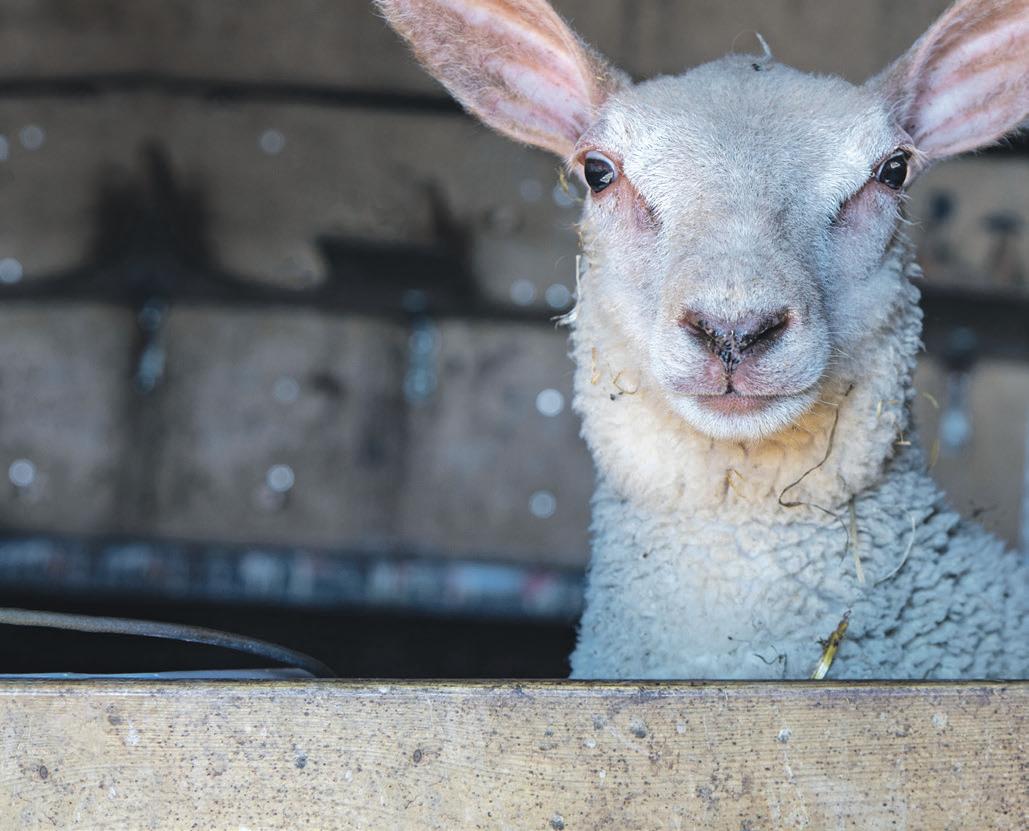
“Technology can assist us to support and sustain the wild and native bee populations upon which our food security and ecosystem sustainability depend,” he says. “Future farming using advanced AI to monitor bee population and movement for precise pollination and tracking hive health can improve management of crops and other natural resources.”






Brexit opened the door on direct trade deals with the UK; now, a much anticipated free trade agreement (FTA) is expected to begin to bear fruit.
Despite arguments from some quarters that a better deal could have been struck for exporters, especially in the primary sector, Damien O’Connor asserts the FTA (in e ect from May 31) will save millions and boost jobs.
“Our wine industry will see at least $25 million in tari s disappear overnight,” he said. “Honey producers will no longer face a 16 per cent duty and our dairy and red meat sectors will transition to duty and quota free access for the first time in 50 years.”
Summoned to Washington DC, the summit of western democracy, Damien O’Connor attended a summit focused on grassroots adaptation in the face of climate change.
“The [Agriculture Innovation Mission for Climate] Summit presents a rare opportunity for an international meeting of agriculture ministers to discuss the sustainable reduction of agricultural emissions and the ways in which we can work together to support farmers and growers across the globe to shift the dial on their emissions,” he said regarding the midMay conference.
“As we adjust to changing consumer



Tree clearances are dependent on the voltage of the overhead lines. There are two zones;

Growth Limit Zone A







The space around the powerline (measured in metres) where trees must not encroach, even in windy or stormy conditions.
Notice Zone B
One metre beyond the Growth Limit Zone. If your trees are encroaching on the Growth Limit Zone of that line, you will be issued a cut or trim notice. You must respond and take the action required by the cut or trim notice or face a fine in excess of $10,000.
Your trees are your responsibility. Trimming or felling trees around power lines could result in electrocution or serious injury from electric shock - use an approved arborist. Always treat lines as live, and if a tree or object touches a line call 0800 100 202 immediately.
trends and a changing climate, we must continue to support farmers and growers to keep up their work reducing on-farm emissions, growing exports, and retaining a competitive edge in international markets.”
Following the summit, Mr O’Connor was on the road to the motor city (Detroit) for the APEC (Asia Pacific Economic Cooperation) Ministers Responsible for Trade meeting. As our agriculture continues to be New Zealand’s largest exporter, shoring up trade ties is especially important for the primary sector, he believes.
“The Chris Hipkins’ government is continuing to build on our successful trade recovery strategy. Trade is key to New Zealand’s economy.”
You may be entitled to a first free trim or removal. Please contact us for more information.

Learn more at countiesenergy.co.nz/trees
Keep
Our Minister of Agriculture (and Trade) had little to say about this year’s budget. However, other matters were on his itinerary recently, as summations of reports from his o ce confirm.
Damien O’Connor








 By Ditch Keeling, Coastal Pest Solutions
By Ditch Keeling, Coastal Pest Solutions




Iwatched, with great interest, a segment about cat control on the Sunday TV show recently. It was titled ‘Pet Hate’. I couldn’t help but cringe as any form cat control is, without a doubt, the most contentious, emotional animal issue I’ve dealt with. Every time I’ve written on the subject, we’ve been inundated with loads of hate mail. So, writing about it now proves I must be a slow learner!
There has been a real resurgence in discussion around cat management in NZ, much of it seems to be driven by the fact that cats are the only predators not mentioned in government’s 2050 pest free plan. I’m not surprised as it’s an issue that falls all too easily into the ‘too hard’ basket and any discussion tends to quickly become dominated by many super passionate, pro-cat groups. I have felt the sting of their backlash so often that I don’t read hate mail and have nothing to do with social media.



The big surprise for me this time has been the apparent about face from the SPCA. Christine Sumner (from the organisation) said their current ad hoc approach to management is ine ective
and inhumane with the SPCA taking in around 25,000 cats and kittens each year, equating to three quarters of all the animals they deal with. In general, more cat rescues are being established but they are struggling with increasing numbers of dumped kittens.
The owner of a west Auckland cat rescue (also featured on the show) said she intended to house 20 cats or so, but she has, currently, more than 200 and has resorted to neutering and releasing them where they were found – is this nuts or what? Do we all really want stray cats out in the wild, struggling for tucker, fouling our gardens and scrapping with our pets?


We certainly jump on the issue when it concerns dogs but there is plenty of legislation allowing the authorities to deal with stray pooches; it seems we are getting ever closer to acknowledging the need for similar legislation for cats.
The current push is for cats to be microchipped, desexed


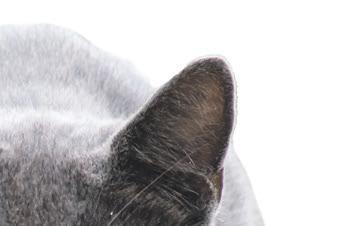
(except for registered breeders) and registered as pets. There is also a suggestion that cats should be kept indoors at night. The first of these make a lot of sense to me, but I don’t know if anyone could ever, realistically, be expected to keep a cat indoors at night! Microchipping would ensure cat control programmes near towns undertake scanning before euthanising captures, keeping pets safe and speeding their return to owners. Desexing is a no-brainer given the ever-increasing number of kittens out there. As for registration, I’d usually be the last person to advocate for more laws, but maybe it’s the right time. Registering should encourage people to become truly responsible owners while giving those who deal with strays the room they need to focus on the issues at hand. Until next time folks… meow!
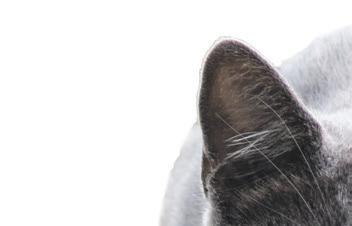

The last month went so fast and with (mostly) bad weather, which now seems to be the norm, we didn’t head o on many outings – a little more on that later. In the meantime, we had a bit of news closer to home.

I was very proud of our team winning prizes at the recent Community Newspaper Association awards. Jon, our editor, won Best Sports Journalist while Clare, our designer, won Best Graphic designer and Rural Living was runner up for Best Front Page. Rural Living is often a winner at these awards and, although these results don’t change anything, they confirm that we are giving our readers the best of the best. Well done to the small team producing this magazine and thank you to our loyal advertisers who bring this magazine to the community. Without the support of readers and advertisers it wouldn’t matter how many awards we won.
Driving around Drury, and also on the motorway to Bombay, I can’t get over the explosion of housing developments. Seeing tra c lights










Times

BEST IDEA/INNOVATION
Winner: EastLife Magazine, Times Media
BEST GRAPHIC DESIGNER













Winner: Clare McGillivray, Times Media




BEST SPORTS JOURNALIST
Winner: Jon Rawlinson, Rural Living, Times Media
BEST FRONT PAGE – MAGAZINE

Runner Up: Rural Living, Times Media





















where, not so long ago, there were cows or other animals grazing is odd – it seems to be changing so fast. Sleepy Drury is no more and, much as I understand we need growth, I am not so sure I have to like it. Our 25 years living in Drury were fabulous and not a lot of change took place, when it did it was minor. That’s the past but our old street, Runciman Road, is still very special to us.
I regularly meet my friend from Waiau Pa for lunch, but it is sad now that her husband, Tony, is not joining us. In the past, we travelled the world and shared lots of holidays, but we never know what is waiting around the corner. Tony’s dementia has been such a cruel blow, but it reminds us how

important it is to live for today. Speaking to a local optometrist recently, I asked how business was going. She said it was quieter than usual because so many people were overseas on holiday. How wonderful to go and seek the sun where it actually shines! Four of our sta members are heading o to such amazing places as Hawaii, the Gold Coast, Fiji and the Cook Islands. After being shut down for so long during the pandemic, many Aucklanders have decided to ‘escape’ – good on them! I might see if we could go somewhere close by soon enough, however the options are limited with so many people already heading away. Hopefully, I’ll have more to tell of our own adventures next time.
Phone



Every homeowner wants to enjoy a feeling of pride and comfort when driving up to their home not just for the first time, but every time. And, that’s exactly what the team at Homes by Nest works hard to create – even the name reflects that sense of warmth and snugness which envelops homeowners when they walk through the front door into their very own living space.
Media is proud to have been recognised for the hard work of our team at this year’s NZ Community Newspapers Association Awards, which are held annually to highlight the achievements of association members in informing their respective communities.


When Ardmore hosted this year’s Auckland All Day Ford recently, our photographer (and keen motoring enthusiast), Wayne Martin had the event firmly in his crosshairs. Focused on wartime Fords, the 2023 edition was right on target. A full photo gallery is accessible online via www.ruralliving.co.nz.
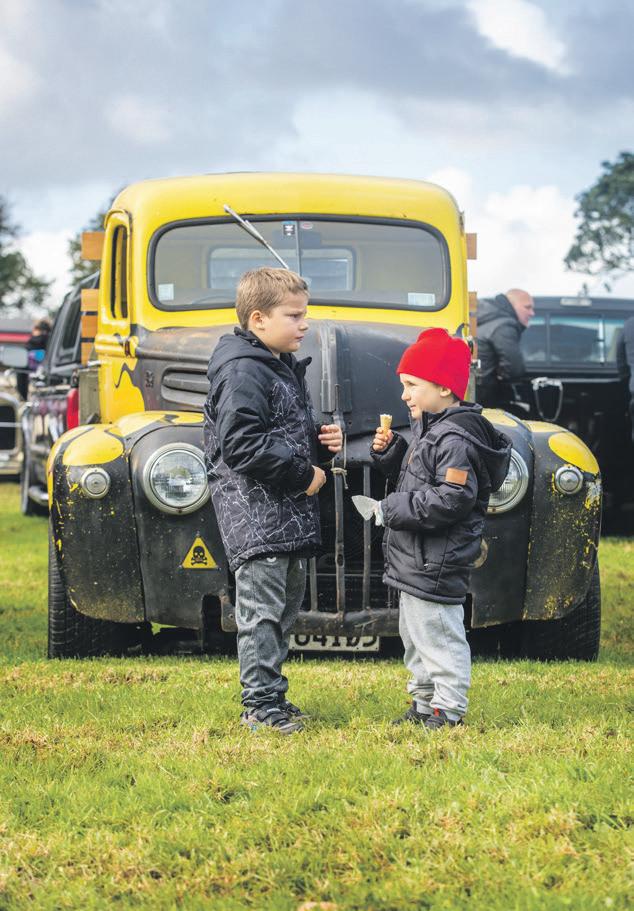





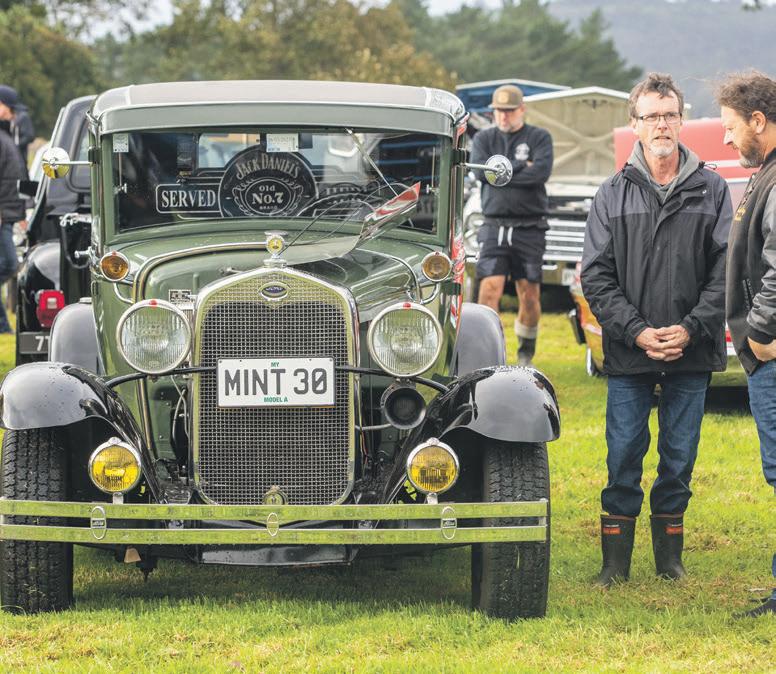

Proof that a good team is worth more than the sum of its parts, Emily and Charles Looker have struck a chord with audiences through their harmonious collaboration, as JON RAWLINSON discovered.

East and west may never meet but north and south have succeeded in this respect. While Charles Looker hails from south Auckland, his partner in life and music, Emily, grew up in the city’s north. Collectively known as Aro, the duo is now settled in Pukekohe. However, they’re yet to become more than just a little bit country.
“It is nice to drive through the country most days, and our daughter, Olive, is thoroughly in love with hoiho (horses), kau (cows), hipi (sheep), all the farm animals we get to see,” Emily says. “We haven’t
written a country song yet, but who knows, maybe on the next album!”
Perhaps best described as ‘Aotearoa jazz pop’, Aro’s latest releases are exemplary of the duo’s ‘voice’ and message.
“Know How dropped in May and we also released the te reo Maori version of a waiata called Aroa. The key message is ‘hope’. We wrote it last year when something didn’t go the way we planned, which gave us the opportunity to see things with a fresh perspective, like a blank canvas. Through that time, we reminded ourselves that everything was going to be okay; we know who
we are, where we come from and we’ll figure out where we’re going along the way.”
While both are vocalists, Emily also plays saxophone, among other instruments, while Charles plays guitar and dabbles with piano. The bilingual duo is a partnership of people drawing on a combination of cultures and experiences.
“Aro brings together both Charles’ and my musical upbringings. Our music would be found in the ‘Aotearoa’ section, if that’s still a thing! As te reo Maori is the original language of Aotearoa, it’s super important that it continues to thrive.
It’s been awesome seeing how many people are joining the waka, with their hoi (paddle), to learn the language, although we know that we are just a small part of a greater movement.”
Because their art requires musicians dig deep, often exposing their innermost emotions, many band relationships can prove rather tempestuous, especially when romantic partnerships are also involved. And yet, Emily says her personal and professional connections with Charles actually strengthen, rather than undermine, their e orts.
“It can be hard work at times but I’m very grateful that we get to do it together, picking each other up when we’re a bit uninspired, to keep on chuggin’ on,” she confirms. “I also have my own band and solo project as Emily Rice, but it doesn’t have anything to do with taking time away.
Charles is my biggest supporter and he’s always still a part of the process somehow, whether it’s as my sounding board or helping come up with the right chords or rhythm to capture the vibe I’m after.”
Write, record, perform and repeat –now working on their second album and embarking on another nationwide tour (beginning at Onewhero’s OSPA Theatre, June 30), Aro is well at home with their artistic process, even when out on the road. Although Emily says creating new music is exciting, performing a ords the pair tremendous satisfaction.
“Performing is probably my favourite part, sharing stories as we sing our hearts out. We strive to give our best performance at every single show, whether we have 20 people join us or hundreds. Sometimes, our set list will change as we cater to the atmosphere at a particular venue or with a certain crowd. We just want to connect with people as best we can.”
Making friends and gaining fans, the pair has met with critical acclaim. Aro was a finalist at the 2023 Children’s Music Awards and at last year’s Waiata Maori Music Awards. Emily and Charles were also finalists for the APRA Best Children’s Song Award in 2020 and in the 2019 Silver Scrolls. In addition, Aro has cracked the NZ top 10 a number of times.

“We don’t really expect our songs to be hits, that’s never our intention, but it’s cool if it happens. We just write and share our songs and then put them out in the world to do their thing. If they resonate with even just a few people we’re stoked,” Emily adds. “We still reckon our best is yet to come –we are always growing as artists the further we get into our career.”
Emily and Charles Looker’s collaborations (and cohabitations!) began soon after meeting at university. However, they’re now well at home in Pukekohe and keen to share their love of music with the community.
“After we were married, we lived in central Auckland, then in a van for two years touring. When the time came to find a home, Pukekohe just felt right,” Emily says. “We love that it’s a bit rural, that there’s a sweet village vibe, away from the busyness of Auckland but close enough for all the opportunities that come with it. Plus, most of our whanau live near here, which was the biggest drawcard.”
The duo (known as Aro) was ‘instrumental’ in setting up free music events at Pukekohe’s Café Kaos and the Franklin Arts Centre.
“I thought it would be pretty neat to have more music events here. Kaos open mic nights have been
sweet and we have another on June 29. It’s awesome hearing musicians (as well as poets and spoken word artists) share their stories on the local stage. It’s a big deal getting up in front of people, so I always focus on making sure it’s a safe space where people are encouraged to listen and enjoy.
“As for Franklin Music Nights, we’ve had two so far (the next is on July 8) and they are fun! It’s so important for young people keen on music, in particular, to have a chance to share their songs with a supportive audience. I’m also a vocal tutor and have a bunch of amazing young people I work with – it’s crazy how creative they are! I love finding opportunities for them because good things are worth sharing.”
For more information regarding upcoming events, new releases from Aro and a full touring schedule, visit www.aromusic.co.nz.






Rather than make Christchurch a car-free city, Energy and Resources Minister, Megan Woods, has a better idea to curb climate change.
“The Government is partnering with NZ Steel to reduce 800,000 tonnes of climate pollution from its Glenbrook mill each year,” she says. “That’s the equivalent of taking approximately 300,000 cars, or all the cars in Christchurch, o the road.”
Despite the ‘o the wall’ comparison, the initiative does draw from the well of common sense. The installation of an electric arc furnace at









NZ Steel’s Glenbrook mill will cut coal use in half, our Prime Minister, Chris Hipkins, announced during a recent visit to the site.

“This size of this project demonstrates how serious government is about reducing New Zealand’s emissions as fast as possible. Alone, it will eliminate one per cent of the country’s total annual emissions,” Mr Hipkins says. “Businesses will have access to locally produced, cleaner steel, and high value jobs are protected that otherwise might have gone o shore. Without government investment this wouldn’t have
happened, so it’s fantastic to see what working together can deliver.”












Backed by up to $140 million in government funding, the deal with NZ Steel has been applauded by Greenpeace as a step in the right direction to reducing carbon emissions.

“For too long successive governments have been too timid to regulate the most polluting industry in New Zealand: intensive dairy,” spokesperson, Amanda Larsson, adds. “The Glenbrook Steel announcement is a good step in the right direction. Let’s keep the steel sharp with action on New Zealand’s biggest polluter.”




Counties Energy has switched on to a new pilot programme. Recently, one of the company’s ‘bucket trucks’ was fitted with an electric battery. All going well, in future it won’t just be the locals they serve by ‘going electric’, the organisation’s Tracey Kay says.

“We’re proudly and passionately working towards a more sustainable and energy e cient future, and with this programme we’re transitioning in the right direction. We’re excited to see the results of the trial.”
Although the truck is a hybrid (drawing on diesel as well as electric power), it marks a concerted e ort to lower emissions, Ms Kay asserts.
No ordinary girl, Hannie Schaft refused to bow her head to oppression, as this page-turner confirms. Based on the true story of a young woman who became a freedom fighter with the Dutch Resistance during the Second World War, this book provides a unique perspective on war and its impact on civilians. Ideal for history bu s as well as fans of historical fiction, this story takes readers through Hannie’s harrowing experiences.
Buzzy Jackson: The Girl with the Red Hair | RRP $37 | Michael Joseph


The latest work by the bestselling author of Night Race to Kawau, this book is perfect for teenagers, aged 12 and up. Alone on a distant and foreign shore, Harry must find his way while keeping his real identity secret. Featuring real characters based on historical figures, this blend of fact and fiction charts the course of a young settler, arriving in New Zealand in 1840.
Tessa Duder: The Sparrow | RRP $22 | Penguin
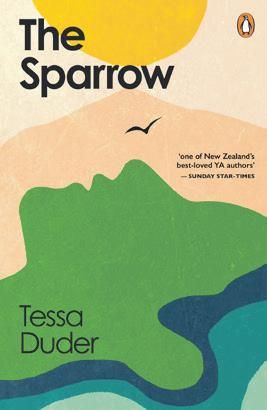






In his garden overlooking the Kaipara Harbour, Sidney King prepares to mark his one hundredth birthday. Set on a single day in 2016, this multigenerational novel explores the fatal history of two families, Pakeha and Maori. Sidney is on the brink of solving a mystery that has haunted him since he fought in the Spanish Civil War in a tale of memory, how it serves and deceives us.
Cli Taylor: The Spanish Garden

| RRP $37.50 | Quentin Wilson Publishing

Renowned author and columnist, Joe Bennett, charts the first 30 years of his life in this book, the first volume of his memoirs. Known for his irreverent wit, Joe presents a humorous account covering his early years, while growing up in the UK, and then on to finding his feet (as well as his unique voice) here in New Zealand.
Joe Bennett: From There to Here
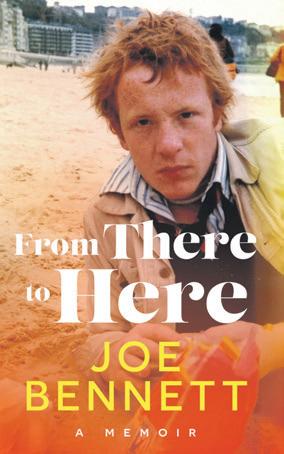
| RRP $39.99 | HarperCollins NZ






The majesty and mystery of desert landscapes are presented in this informative book, ideal for children aged three and up. Revealing that even the world’s most (seemingly) desolate and unforgiving regions are home to a rich range of life, Desert Jungle is intended to teach young ones more about the world around them and why it needs to be protected.
Jeannie Baker: Desert Jungle





| RRP $29.99 | Walker Books
Not all nanas are well mannered, as this children’s book reveals. When three grandmothers head away on holiday only to find the resort doesn’t serve such goodies as chocolate nachos with cheese, a cheeky and funny story develops. They’re rude and not in the mood for anything other than their favourite food!
Justin Christopher & Minky Stapleton (illustrator): Nanas with No Manners
| RRP $21.99 | Scholastic NZ



A new solar energy project has raised some issues, as Andrew Bayly (National MP for Port Waikato) explains.





An agreement between Island Green Power (IGP) and mana whenua for a 600-hectare solar farm in north Waikato has raised the issue of protecting our elite soils for productive land use. A solar farm in Rangiriri and Waerenga will involve the installation of around half a million solar panels. Construction is expected to begin next year. Once operational, the solar farms will generate more than 300 megawatts, enough to power around 70,000 homes, with the power fed directly into the national grid. I met with one of IGP’s development managers and the landowners on the Waerenga site in August last year and I have also been in contact with the NZ consulting engineer.
Most of New Zealand’s electricity (57 per cent) comes from hydroelectric generation, the majority in the South Island. So, development of solar farms in the North Island is good news because the cost of transmitting power goes up exponentially over distance – especially when lines must cross Cook Strait. However, there has been considerable concern about whether the Rangiriri and Waerenga solar farm project will take up valuable Class 1 and 2 arable land and its elite soils.
While the land below the solar panels can be used to graze sheep and for beehives, there’s no room for dairy herds and concern about whether the land could be returned to dairying once the solar farm lease expires. National is concerned about this. It makes no sense to use prime arable land and elite soils for a solar farm, especially land located so close to Auckland. For solar farm developers, the primary driver for investment will be finding locations close to the national grid lines. However, investors have a choice, and our strong preference is that solar and wind farms are not located on elite soils.

Even in the depths of winter, Papakura o ers much to locals with shopping, events and more, as Tracy Shackleton confirms.

WELCOME: I’d like to extend a warm welcome to Kia Ora Baby, now open at Roselands Shopping Centre and providing everything necessary to keep our youngest locals warm this winter. Penina Trust, which provides support for our pacific community, and DH Supermarket have also opened their doors (both in O’Shannessey Street) with Bella the Nails (at the Prictor Street shops) ensuring locals are belles of the winter ball.
MAGICAL MATARIKI: The stars will be aligned as we celebrate Matariki with everything from colourful flags flying in our town centre to events in the library, art gallery and museum. Don’t forget that we have a public holiday to mark this occasion on Friday July 14!
WHERE TO EAT GUIDES: From cafes to restaurants, for a quick bite or a hearty, warming winter meal, Papakura has many options from which to choose. However, the first thing on any menu should be our Where to Eat in Papakura guide – simply call us (0220997331) and we can post out a print copy or visit www.papakura.co.nz.
ASSOCIATE MEMBERSHIP: While Papakura businesses benefit from membership with our association, our assistance doesn’t stop there. If you’re located beyond our area, please give us a call and we’ll be happy to provide everything you need to know about how associate membership can help your business thrive.









Papakura Business Association







56A Broadway, Papakura
Papakura 2244, Auckland
Phone 0220997331




www.papakura.co.nz
papakura.town.centre @livepapakura








Harris from Alberts reveals.
Vibrant, neutral, natural, any colour goes!
Increasingly, people are choosing tones that suit them best and not necessarily what’s ‘in vogue.’


Colour is all about customising hue and placement, favouring healthy hair and a glossy finish above all else, with glossing treatments changing the way we colour hair.
A ‘must have’ salon service, glossing creates a lived-in feel. A gloss can tone down highlights, add richness, correct unwanted undertones or simply add shine. It’s like a filter for your hair delivering smooth, shiny, balanced results.
The latest innovation from Kevin Murphy, GLOSS. ME is an all-in-one colour and repair treatment service enhanced with bond builders to deliver beautiful colour with 37 per cent thicker, 25% stronger hair – it’s ideal for all hair types.


Looking to restore colour but make it better? To create a ‘done without looking done-up’ finish, a gloss treatment is a sure-fire way to enhance any tone. Our expert stylists can assist through a standalone service or during your next appointment for a trim or blowout at Alberts.
While stocks last, we are giving away free Everlasting Colour Leave-in (valued at $79) with every colour gloss service in June and July. This bond building colour protective treatment is a lightweight leave-in spray. It treats hair from the inside, strengthening resistance for improved, more robust and healthier hair. Preserving colour vibrancy, it also protects hair from environmental stressors while nourishing, hydrating and repairing.
For enquiries & bookings contact: Alberts Hair Salon Shop 2/23 Hall St, Pukekohe
Ph: 09 238 7576

Shop online at: www.alberts.co.nz





















Winter plays havoc with skin (and more), so it pays to keep our eyes open to the latest beauty buys.




An addition to Ardell’s range, Active Lash faux lashes (RRP $16.99-19.99) are designed to withstand water (including rain) while retaining shape and curl. Available in three chic, sporty styles, these lashes use high-performance fibres and flexible, lightweight bands. So, even if we’re stuck in a downpour, we can still look glam thanks to Ardell!


Moroccanoil Body’s overnight body serum (RRP $108) is intended to work hard while we rest. Utilising our skin’s natural night-time recovery process, it draws on an antioxidant-rich blend of ingredients (including argan and tsubaki oil), working hard to strengthen, nourish and protect. This highly concentrated serum aims to provide a radiant, youthfullooking appearance.




Dream Cream from SugarBaby (RRP $32.99) is a sweet new addition. This luxurious daily moisturiser o ers hydration with a surge of healthy vitamins, hyaluronic acid, coconut organics and antioxidant-rich fruit











extracts. Practically melting into skin, this lightweight cream is designed to deliver a soft, dewy finish for healthy, radiant results. What’s more, it’s a dream come true for those with sensitive skin.


As the pandemic demonstrated, good health is the cornerstone of a strong community. On the following pages we continue our focus on services intended to ensure Frankliners remain in the pink as we sink into winter. From prevention to treatment, healthy eating to surgery, the local area is well served by dedicated, highly qualified professionals.
In addition to major, mainstream health providers (especially Middlemore

Hospital and the SuperClinic in Manukau) we also have smaller public and private hospitals in Papakura, Pukekohe and Waiuku. Care comes in many forms, from GPs and pharmacies, to vets specialising in all creatures great and small as well as a host of health and wellness practitioners.
For details concerning health services visit countiesmanukau.health. nz, contact our fantastic local business associations or speak with your GP or pharmacist.














PetRe cover y is a nat ur al supplement t hat combine s de er velvet , glucos amine, and chrondroiton to supp or t he alt hy joint s and mobilit y in older c at s and dog s It provide s nut r itional pre cur sor s for c ar tilage he alt h and promote s over all well-b eing wit hout side- effe c t s








Pets can face stressful situations beyond their control, such as loud parties, long trips, and fireworks Pet Calm offers a natural solution with non-narcotic herbs to soothe pets Try it for a calm and relaxed pet or simply for when a good night's sleep is needed As used by kennel proprietors nationwide



ORDER NOW! 0800 502 402 or online www.silberhorn.co.nz

There’s no such thing as a free lunch but, to ensure young Kiwis are well defended against illnesses, the 5+ A Day charitable trust has been doing its homework. As a result, an independent evaluation of the Fruit and Vegetables in Schools initiative (FIS) shows widespread support from principals, the trust’s Carmel Ireland confirms.

“Food insecurity has reached even greater heights than before the pandemic. [It has] become hard to put nutritious food on the table every day with 93 percent of principals saying FIS supported them. FIS has a vital role to play in the school day.”
Funded by Te Whatu Ora







NZ), the programme provides fresh produce to more than 120,000 children and school sta each year.
A healthy diet is a critical part of bolstering immune systems (meaning fewer days o school) and such ‘brain snacks’ help improve children’s ability to learn. Resources are also provided to teach students about healthy lifestyles.
“Supporting learning is a vital component of FIS,” Ms Ireland adds. “Our goal is not just to feed hungry tamariki, we want to encourage a life-long appreciation of the value of nutritious food and we’re able to do that by providing a real variety of tasty fresh produce.”
For more information about FIS visit www.5adayeducation.org.nz.

Find out how a visit to Cutting Edge Plastic Surgery could change our lives. It’s more than skin deep, but skin health and skin cancer screening is a good place to start, as Adam Greenbaum advises.
It’s all about you at Cutting Edge Plastic Surgery. Operating from our new building in Roulston Street, Pukekohe, for just over a year now, our dedicated team continues to grow a thriving surgical service focused firmly on personalised care. General consultations and all other treatments are conducted in our quiet and friendly practice with bigger operations (under general anaesthetic) at Franklin Private Hospital.
Our new space has also allowed us to offer more services. With SkiNZure, we now have a one-stop-shop for skin screening. A full body skin check is just one call away! What’s more, we save patients the expense of a visit to a mole checking service and, if a problem is found, a GP visit followed by a specialist consultation. With our practice, one referral provides total body photography, a dermatoscopic
Adam and Annieexamination and a specialist assessment, saving time and money. From skin check to diagnosis and treatment takes a matter of days, not months, reducing stress of juggling multiple appointments and referrals.
Our team of specialist nurse dermoscopists has more than 90 years’ nursing experience between them, mostly in specialist plastic surgery. And, our specially trained healthcare
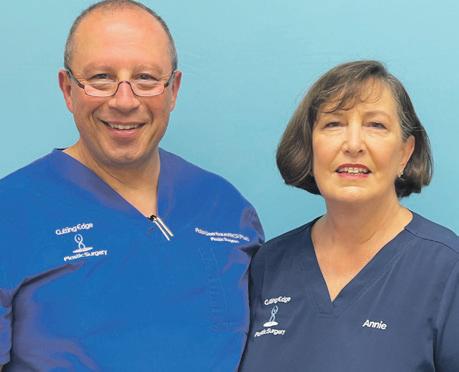
Although Adam has a commitment for most of August, the rest of the team is raring to go! Book (during the three weeks Adam is away) for a full body skin check with SkiNZure at Cutting Edge Plastic Surgery for 75% off the usual price! Speak to a member of our team for details today.
assistants work closely with me. As a result, Cutting Edge Plastic Surgery is well equipped to support patients with a range of services.
Whether you want advice on skin cancer, optimising your appearance, problems with hand function, or you are considering surgery to reduce, lift or enlarge breasts or a ‘tummy tuck’, our focus is on providing the best advice, service and expert care possible.
To find out more check out Adam’s website at www.ceps.nz or phone the practice on 09 238 8881

“Dentures can be a nightmare when they are not fitting well. Worn dentures may cause discomfort when eating or speaking.”
























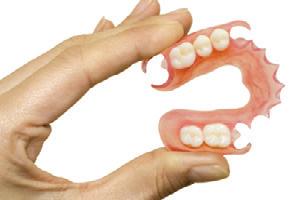





































Cis for citrus so it stands to reason that citrus fruit is known for its vitamin C. While, kakadu plums (an Australian superfood) boast 100 times more vitamin C than oranges, citrus remains a household favourite and just what the doctor ordered, especially at this time of year.
Plant and Food Research.
The bells of Saint Clemens were right to ring the praises of oranges and lemons (satsumas and limes fit the bill too) as they are right on song when needed most.
“When it’s in season, locally grown citrus represents great value for shoppers right through the cooler months,” Dr Lister adds.
While capsicums, blackcurrants, strawberries and even Kiwifruit also o er more vitamin C than most citrus, their days in the sun are over by winter. And, kale, Brussels sprout or broccoli juice, for example, are acquired tastes.
Dr Carolyn Lister,



“Citrus is packed with vitamin C, essential for maintaining a healthy immune system and to help the body fight infections,” says Dr Carolyn Lister,
See www.healthline.com (nutrition page) for a list of produce with the highest levels of vitamin C. Also, visit www.5aday.co.nz to help make the most of this essential vitamin.








Pets can face stressful situations beyond their control, such as loud parties, long trips, and fireworks Pet Calm offers a natural solution with non-narcotic herbs to soothe pets Try it for a calm and relaxed pet or simply for when a good night's sleep is needed As used by kennel proprietors nationwide

breast cancer early at its smallest size can lead to a higher survival rate.





At Mercy Radiology we use the most advanced 3D Mammography screening and diagnostics to detect small cancers long before a lump is felt. Make time for your health. Don’t delay.
Book today: radiology.co.nz
COMPLETE RADIOLOGY SERVICES INCLUDING X-RAY, ULTRASOUND, MAMMOGRAM, MRI

We see you clearly E mārama ana mātou i a koe
Do you have any of the following symptoms?


Restless legs • Heavy, achy or tired legs • Night cramps • Leg ulcers • Poor leg wound healing • Darkening leg and calf skin • Leg discomfort after sitting or standing for a long time • Itchy legs • Spider veins • Ankle swelling • Varicose veins • Past history of DVT
You may be su ering from varicose vein disease













Delphi Clinic has three clinic locations: Pukekohe (Seddon Medical Building, 13 Hall Street), Remuera and Hobsonville. We are covered by all major insurance companies including Southern Cross, AIA, NIB, Partners Life, Accuro, Unimed and more.


For referrals/enquiries email reception@delphiclinic.co.nz






Phone 021795744
www.delphiclinic.co.nz






KC15813








As winter bites, big dreams of little islands are even more common. Made using a blend of plant-based ingredients, Little Island milks have been drawing ‘shakers and moovers’ to the ‘yard’. Available in four flavours (from supermarkets nationwide), these milks are dairy-free, but they also pack in calcium and vitamins to help support our immune systems.



Starring honey nougat crisps and roasted almond pieces, Whittaker’s Honey Nougat and Almond has had tongues wagging, albeit from within full mouths! While some chocolatiers appear content to rest on their laurels, Whittaker’s has come to the party.



























It’s not bread, it’s knot bread! Since its humble beginnings as a small German-run artisanal buttery, Bloom’s has blossomed. Already known to many locals frequenting the Clevedon Village Farmers’ Market, Bloom’s Pretzels are now available (in a wide range of flavours, shapes and sizes) at select Auckland supermarkets, as well as cafes and restaurants.

A sweet siren song has called a foremost wine expert on an Odyssean voyage. Featuring spicy notes with fruity and floral undertones, Akarua’s The Siren (a Pinot Noir) attracted the attention of Baroness Ariane de Rothschild who is now looking to establish her company’s first organic wine production facility in Otago. The Siren is available now but, with the Baroness impressed by Kiwi growing conditions, we may soon have more to sing about alongside our suppers.
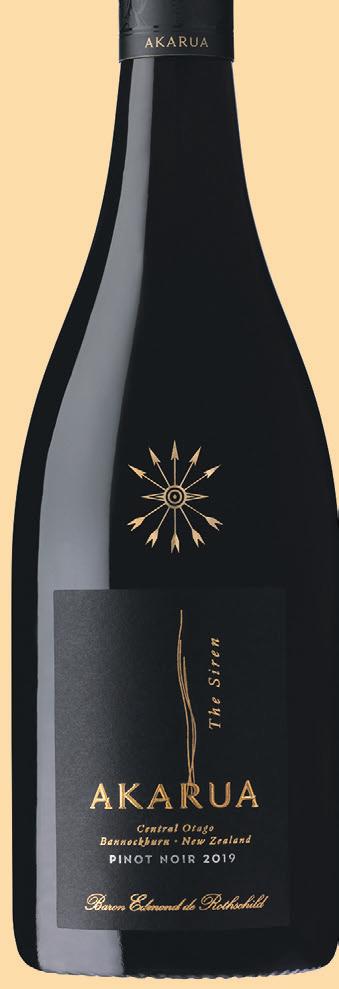

From tempting tipples to tasty treats, life can be ‘fare’ enough, thanks to these new (and recent) additions
Hearty and wholesome, this winter warmer (courtesy of New Zealand Pork) is ideal as the centrepiece of a midwinter Christmas feast. For more ways to really ‘bring home the bacon’, see www.pork.co.nz.

2-2.5kg New Zealand pork roast, bone in and skin on
1 tbsp fresh sage, finely chopped
1 tbsp garlic, crushed
Preheat oven to 220 degrees Celsius. Score the skin of the pork in straight lines, 1cm apart with a sharp knife, making sure to cut through the fat layer but not into the meat. Pat dry with a paper towel. Rub sage, garlic and ginger in between the scored lines, keeping clear of the surface of the roast.
To prepare the roasting dish, drizzle the pork with olive oil and rub into the skin. Sprinkle with sea salt. Fill the dish with the
1 tbsp fresh ginger, finely chopped
1 tbsp olive oil
1 tbsp sea salt
1 tbsp flour
roasting vegetables and herbs. Place a rack into the roasting tray and sit the pork on top of the rack. This will allow air to circulate around the roast. Alternatively, place the pork on top of the vegetables.
Roast for 30 minutes at 220 degrees before reducing the temperature to 150 for a further 2-3 hours, or until a meat thermometer reads 71°C. Remove the roast pork and vegetables and place on a serving
1 cup apple juice
Peeled roasting vegetables such as potatoes, kumara, pumpkin, onion, parsnip, garlic cloves, apple halves or onions
dish. Cover to keep warm and ensure the juices stay on the tray.
To prepare the gravy, make a paste of one tablespoon of flour with a cup of cold water and mix with the meat and vegetable juices. Add a cup of apple juice along with two cups of hot water and mix well. Place the tray on the stovetop and stir. Simmer until thickened.
Season roast (to taste) with salt and black pepper before serving and enjoy!

Kumara may not be cheap as chips but this recipe helps ensure we can make the most of a valued ingredient. See www.5aday.co.nz for more seasonal recipes.

2 large or 4 small kumara, cut into 1.5cm cubes
1 onion, diced
2 tsp grated ginger
2 garlic cloves, crushed or finely diced
1 tbsp coconut or neutral oil


2 tbsp red curry paste
400ml coconut milk
1/2 cup water or vegetable stock
1 can (400g) chopped tomatoes
1 can (400g) chickpeas, rinsed and drained
Garnish (optional)
Handful of fresh coriander
1/2 cup toasted peanuts
In a large non-stick wok or heavy-set pan, heat oil over medium heat. Add onion and fry until softened.
Add kumara, ginger, garlic and curry paste and fry (for just a minute or so) until kumara is coated.
Add coconut milk, water or vegetable stock, and canned tomatoes and simmer covered for 10 minutes.
Add drained chickpeas, stir through and simmer for another five minutes, until fragrant, and the kumara is cooked through.
Serve with rice or with hot naan bread (or both). Garnish and relish the aromatic flavours this dish delivers.

Some of the simplest dishes really do push all the right buttons and prove that big things can come in small packages with regards to winter fare.
16 medium-large white button mushrooms








300 gms ground sausage meat
300 gms thinly sliced cheese
1 onion
2 celery sticks
1 clove garlic



Vegetable oil
Salt and pepper
Heat a little oil in a pan and brown the sausage meat. Remove and finely chop mushroom stems as well as the onion, celery and garlic. Add these into the pan and cook for fiveseven minutes, until the meat is cooked through and the onions have become translucent. Add salt and pepper to taste. Set the filling aside to cool. Stu the mushrooms with the filling and top with a slice of cheese. Place mushrooms on a baking tray and grill at a low-medium heat until the mushrooms become tender and the cheese is fully melted. Serve as an appetizer or side dish.


Far from a radical addition to the garden or the table, radishes may be, somewhat, overlooked. However, these nutritious, versatile root vegetables grow well when many other plants are thin on the ground… or under it.
From the Brassicaceae family, radishes (Raphanus stivas) are cousins to other widely cultivated veggies, including broccoli, cabbage and cauliflower. First domesticated in Europe they are grown worldwide.

Varying in size, shape and colour (from red to white) radishes are easy to grow. In fact, they are so easy to cultivate that they make an excellent choice for those yet to develop green fingers, including children.
A helpful companion plant, radishes can deter pests, or draw them away







from more vulnerable plants.

In local conditions, radishes can be planted year-round, even in winter. While flourishing in soil temperatures ranging from eight to 40 degrees Celsius, they may benefit from a healthy dose of mulch. This is as much to ensure the soil is free draining as it is to keep the plants tucked in and cosy during the coldest days of the year.
Sow at a depth roughly three times the seed’s diameter and allow, approximately, 4-6cm of space in between. Some slower-growing winter varieties of radish may need to be sown a little deeper, so be sure to read the packet. To provide an ongoing supply, sow every couple of weeks.



Thin out seedlings as they develop to ensure plants reach their full potential and water as needed –















































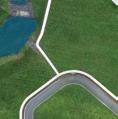























































Nestled in the calm waters of the Manukau Harbour, just off the coast of Karaka, Pararēkau Island is truly a unique location. Standing on the island, feeling the soft ocean breeze, It’s hard to believe you’re just 3 minutes drive to the motorway, and 33 kilometres from Auckland’s CBD.














Sections now available from $1.6M

























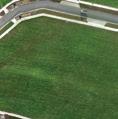





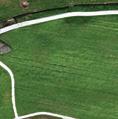










ensuring soil is moist but not wet –as this will improve the flavour of the radishes down the track.


Ready for the table within a month or two (depending on the variety), they can become woody in texture and peppery in flavour if left in the ground for too long.
Steamed, roasted, stir-fried or used in wintery salads, radishes can also bring their potassium, folic acid vitamins and minerals (not to mention flavour!) to the party when preparing hearty, warming soups or stews. And, they can be diced or grated and frozen for later use.


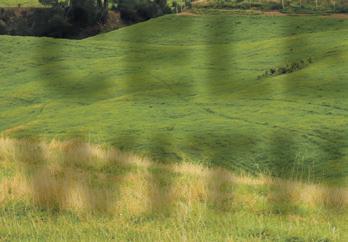
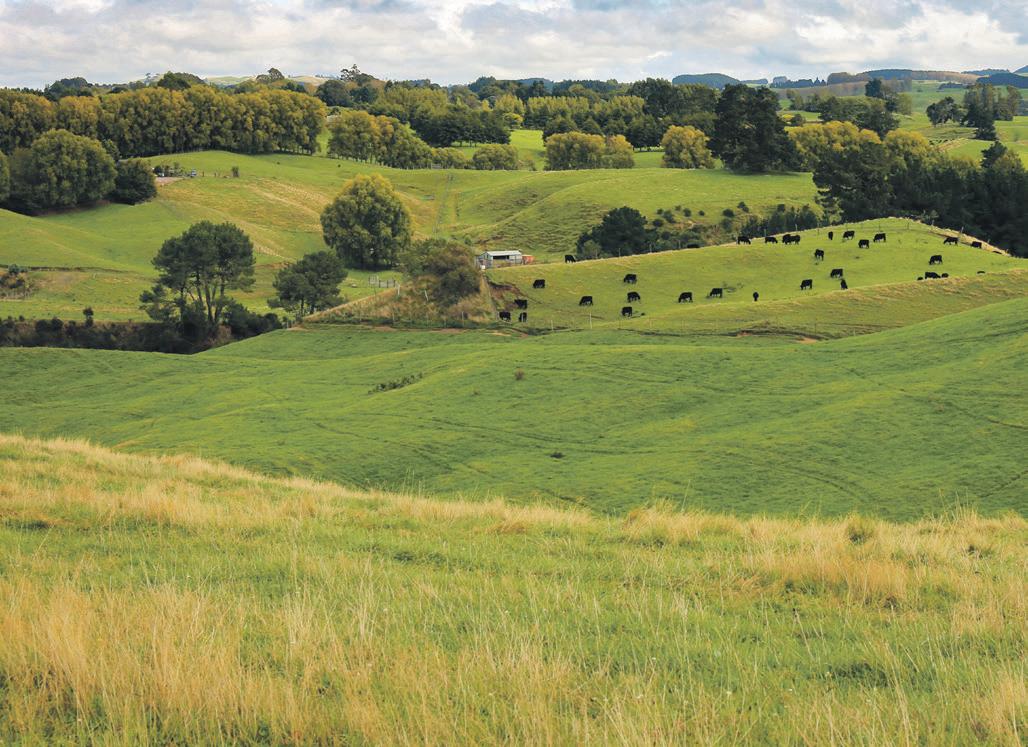
Following record highs in 2020 and 2021, the lifestyle property market has witnessed a decline in sales activity according to the Real Estate Institute NZ (REINZ).
“The first four months of 2022 showed a steady decline in the number of bareland and established lifestyle properties as markets reset following the increase in interest rates and wider economic conditions,” REINZ rural spokesman, Shane O’Brien, says. “Agents continue to report good numbers at open homes and enquiry on listings, however many buyers are adopting a ‘wait and see’ approach.”
Auckland recorded its largest decrease in the number of lifestyle properties sold in the three months to April 2023 compared to 2022, but spring could see a resurgence.
“Recent weather events in the

traditional popular areas of Hawkes Bay and regional Auckland has impacted sales activity but this is expected to change as the traditional spring markets develop.”
With regards to farm sales, a potential change in government could be influencing the market.
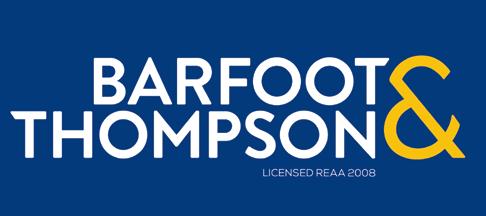
“Uncertainty on the outcome of the election and [its] impact on
farming compliance and regulatory requirements is very much at the forefront of farmers’ minds,” Mr O’Brien adds. “[This] is being borne out with the reduction in the number of listings and sales.”
For a fuller picture of the market, visit www.reinz.co.nz. And, for expert, on the ground advice, contact a local, rural real estate specialist.

Valuation, in simple terms, is the determination of the monetary value of a property. It provides an estimate of how much a property could sell for based on various factors. These factors include the property’s condition, location, aspect, features, recent sale prices of similar properties, and market projections that consider whether sale prices have been increasing, decreasing, or stabilizing.
Valuations are presented in the form of reports that o er detailed information on the factors considered in determining the estimated sale price of a property.
Valuations serve di erent purposes for buyers and sellers alike. For buyers, valuations are typically required by banks before securing a loan for purchasing a property. For sellers, valuations are crucial in determining an appropriate asking price. Both buyers and sellers can use valuations as a basis for informed negotiations.
Various types of valuations are used at di erent stages of the buying and selling process. Let’s explore them:




















Online tools are provided by lenders to o er initial indications of a property’s potential bank valuation. These estimates are helpful for getting a preliminary idea of the property’s value. You o en see on real estate websites the ability to enter a property address to receive an appraisal, or evaluation of that property. This is an example of an automated price estimate.
Calculated by lenders to assess the maximum size and conditions of property loans. These valuations tend to be conservative, as lenders aim to manage the risk of loan repayment. Banks must make sure that the value of the home exceeds the amount of the loan being o ered. Bank valuations are more focused on the financial aspect and may not capture the full market value of the property.
Conducted by real estate agents – These appraisals are typically more optimistic than bank valuations, as agents consider market projections and property features to present a higher value. They typically involve the real estate agent doing a physical inspection of the property unlike automated price estimates where no agent has viewed the property.

The property values are mentioned in the local municipal rates bill that property owners receive annually. These valuations determine the amount property owners will need to pay for water, sewerage, rubbish collection etc. O en only the land valuation is used for this purpose.
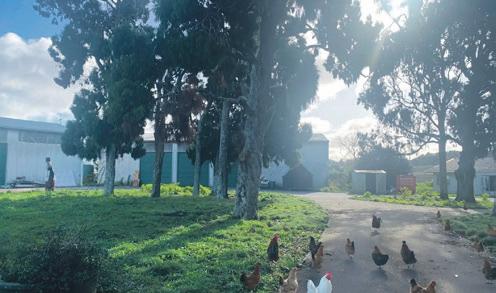














Detailed valuations are conducted by skilled professionals who consider a comprehensive range of factors a ecting a potential property’s sale price. Private professionals o er this service to assist buyers and sellers in navigating the abundance of


0800 TOWNSEND or 021 1696 056
jo-ann.day-townsend@raywhite.com www.joanndaytownsend.co.nz Southern Corridor Realty Licensed Agent REAA 2008



















information from various sources.
The final sale price of a property may align with the valuations or vary significantly. Nonetheless, valuations play a crucial role in facilitating informed decision-making when buying or selling a property.

At the end of a sale, the house value is what the purchaser was willing to pay for it, but that still might not change the valuations provided by the means above.
If you would like a free appraisal of your property, get in touch.











Property valuation is an essential aspect of the buying and selling process, but it can o en seem mysterious and complex. To demystify this process, let’s explore the basics of property valuation to gain a better understanding of the di erent types of valuations available, how they are calculated, and their significance in the real estate market.PUKEKOHE, 28A Helveita Rd PUKEKAWA, 704 Mercer Ferry Rd
Gardners are building a house so a Fox can assist his buddies in nailing their goals. Put another way, by donating proceeds from a new house in Clarks Beach to the Big Buddy charity, GJ Gardner Homes has stepped up to the mark.

“Big Buddies turn up, spend time with their Little Buddy, it’s simple and it works,” Big Buddy trustee and former All Black great, Grant Fox, says. “Boys with a positive male role model gain confidence and become more curious about the world. Their relationships with family members and peers also improve. They generally do better in life and are just happier. Big Buddy is able to provide that.”
Construction of the fourbedroom home (expected to go to auction in August or September)





is a team e ort with some local subcontractors and suppliers chipping in at reduced rates. Ensuring young south Aucklanders can count on positive role models delivers wider benefits, GJ’s Papakura franchisee, Mike O’Meeghan, adds.




“In the building industry, we have young men coming through who
haven’t had a father around. If there were people around to help them earlier on, it would make a huge di erence to their adult lives,” he says. “It makes me proud to tell our team that, while working in the business, we’re also raising money for Big Buddy.”
See www.bigbuddy.org.nz for more information or to donate.









KEEP GREY AT BAY! Why let dull, drab colours hold sway during winter? Designer and artist, Anna von der Heiden (from AN-NA Design, Germany) contends that this is the perfect season to benefit from a little colour therapy.



Counteracting the natural colours of winter, AN-NA’s cushions and pillows boast uplifting pinks and violets, which are thought to improve mood, and ensure our homes retain more than just a touch of colour through the darkest days of the year.






Warming and inviting while promoting self-confidence and concentration, these brighter colours o er just the right amount of contrast to lift our spirits, Anna









believes.


In addition to cushions and pillows – which can be dotted throughout the home, wherever colourful cheer is needed most – AN-NA Design also o ers vivid, enlightening wall coverings.


For further examples from the winter range, or to steel a march on spring, visit an-na-design.com. All products from this designer can be ordered and shipped to New Zealand.













